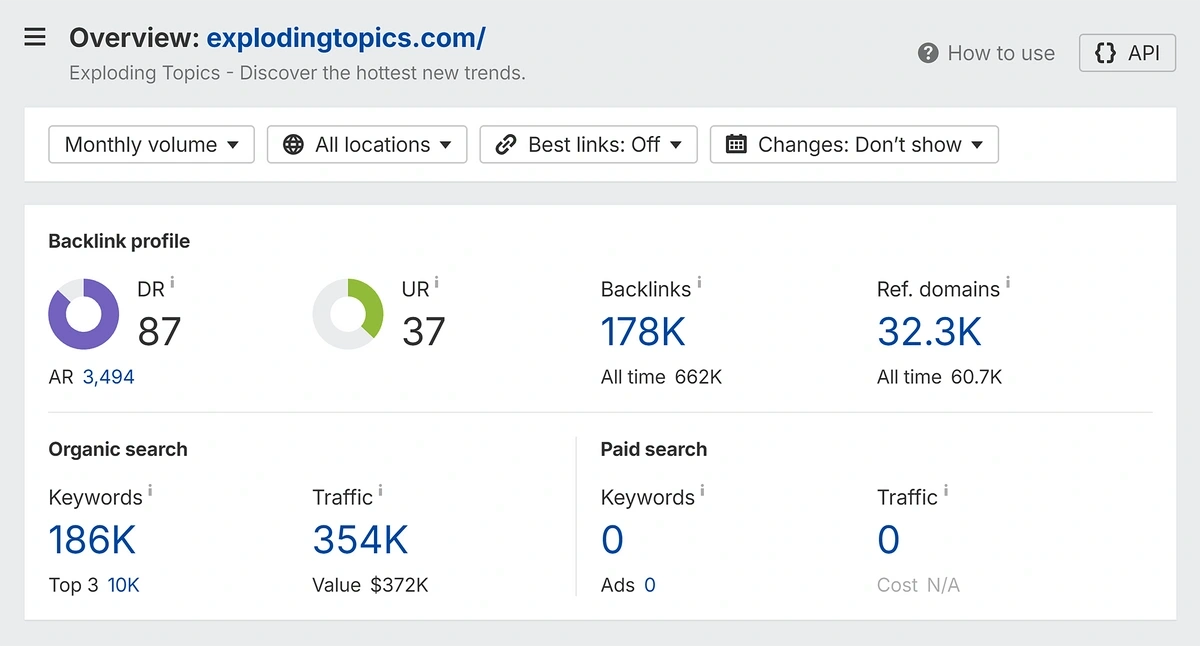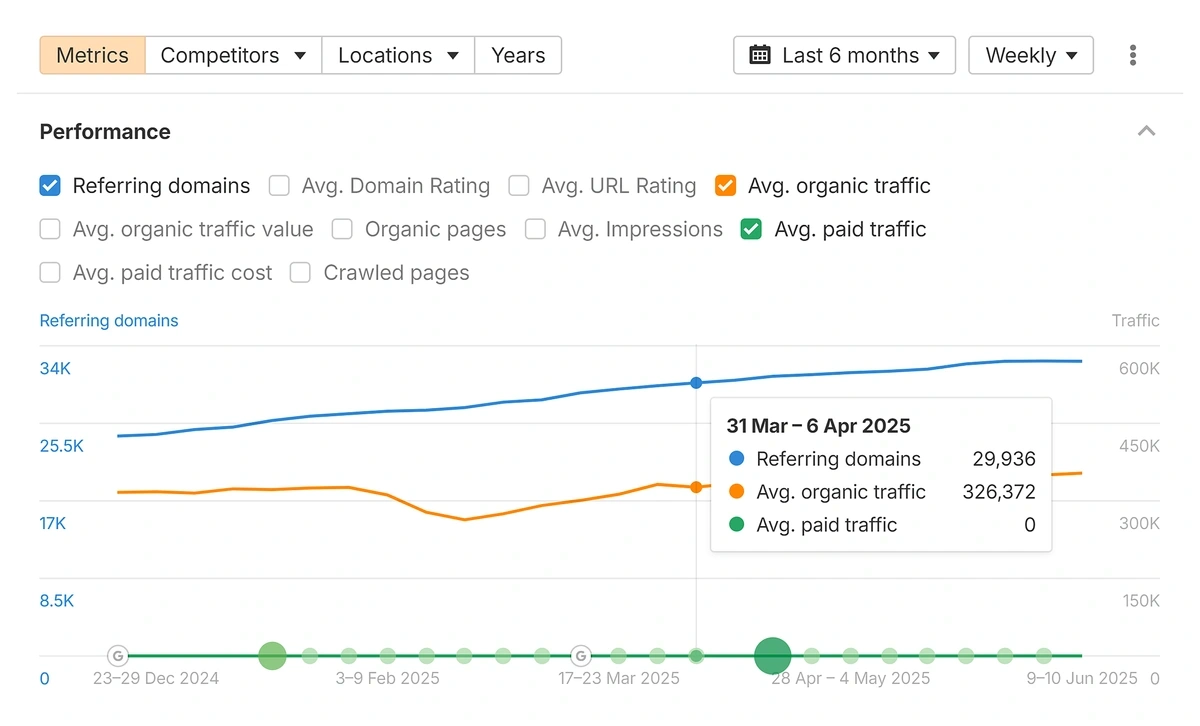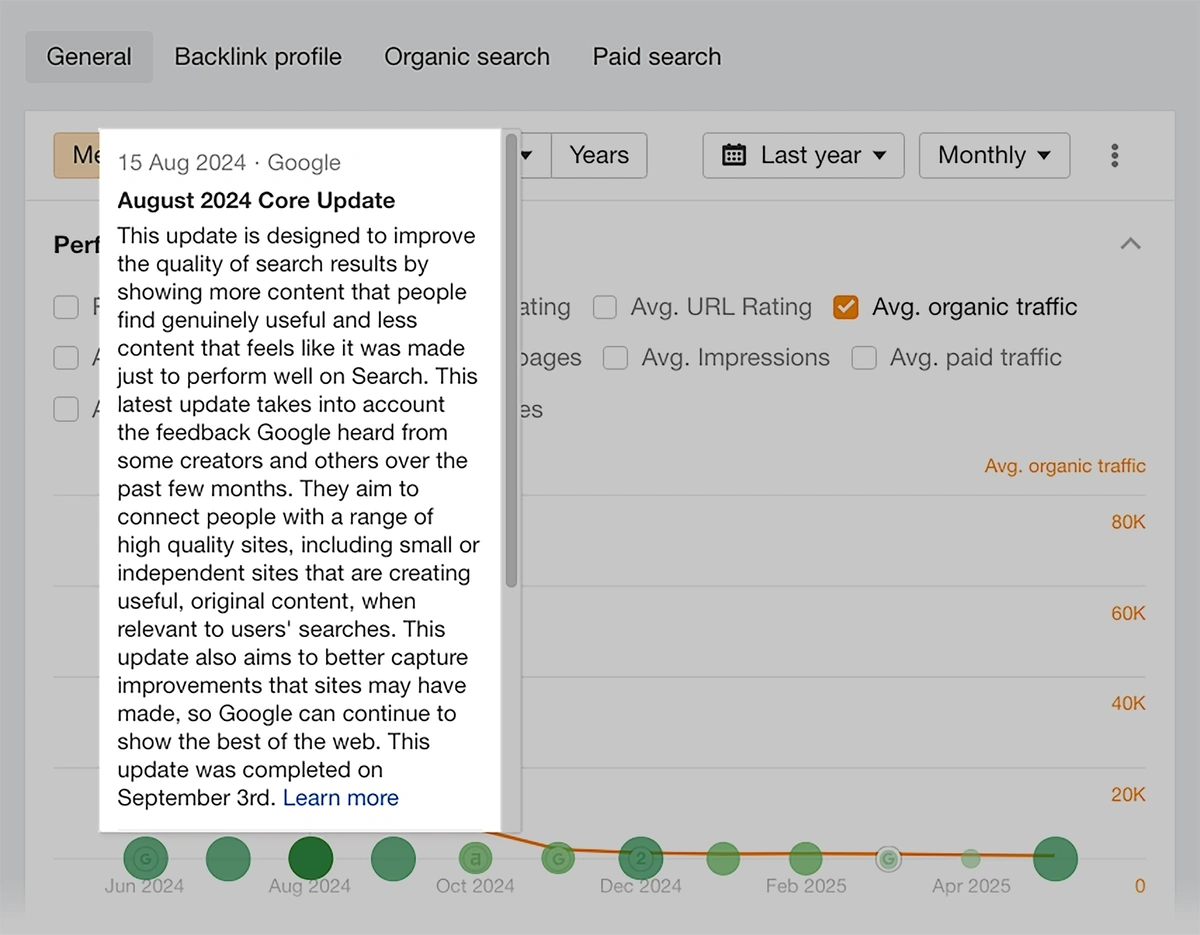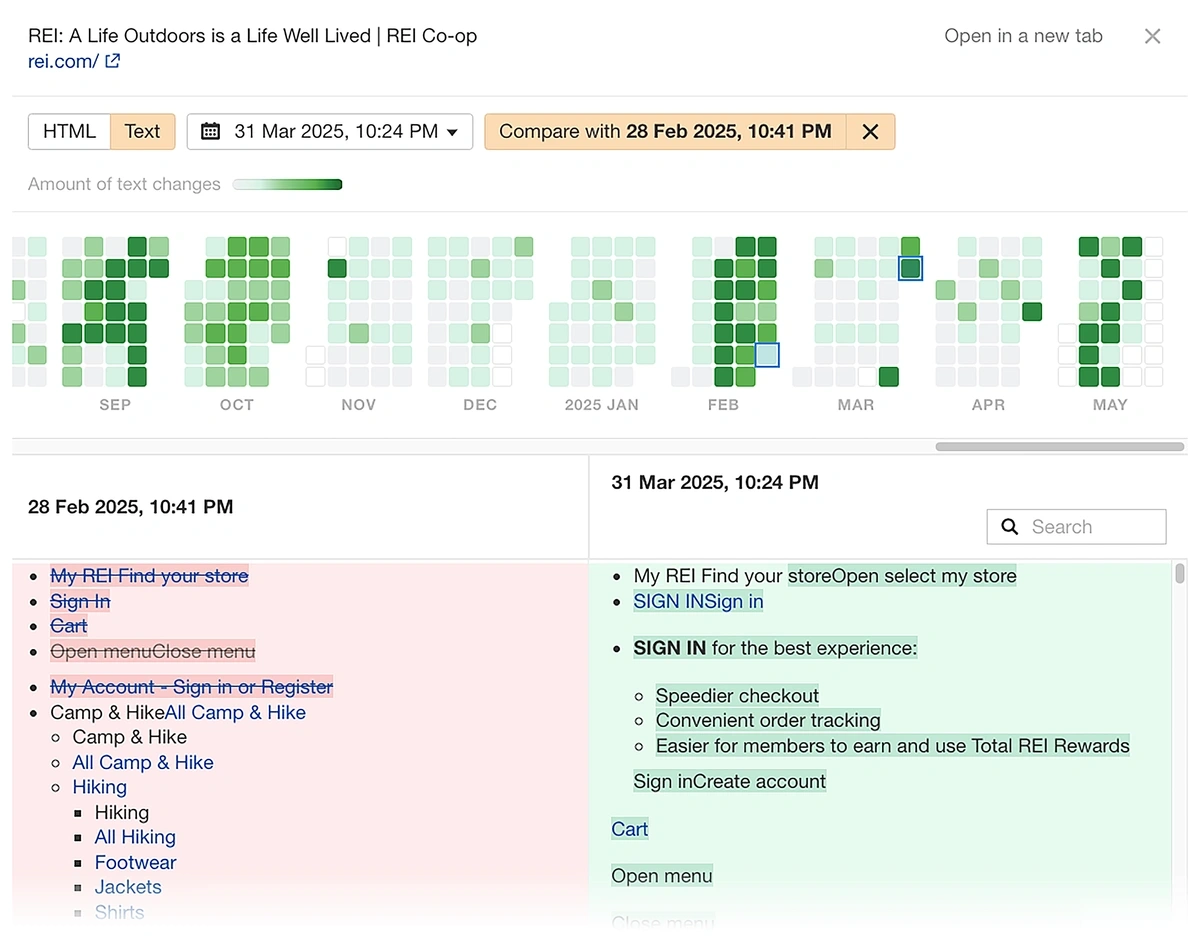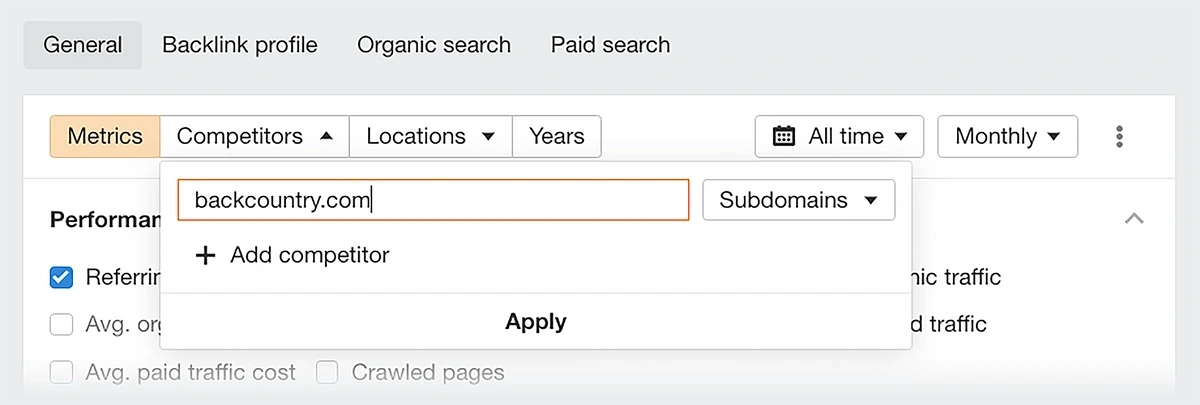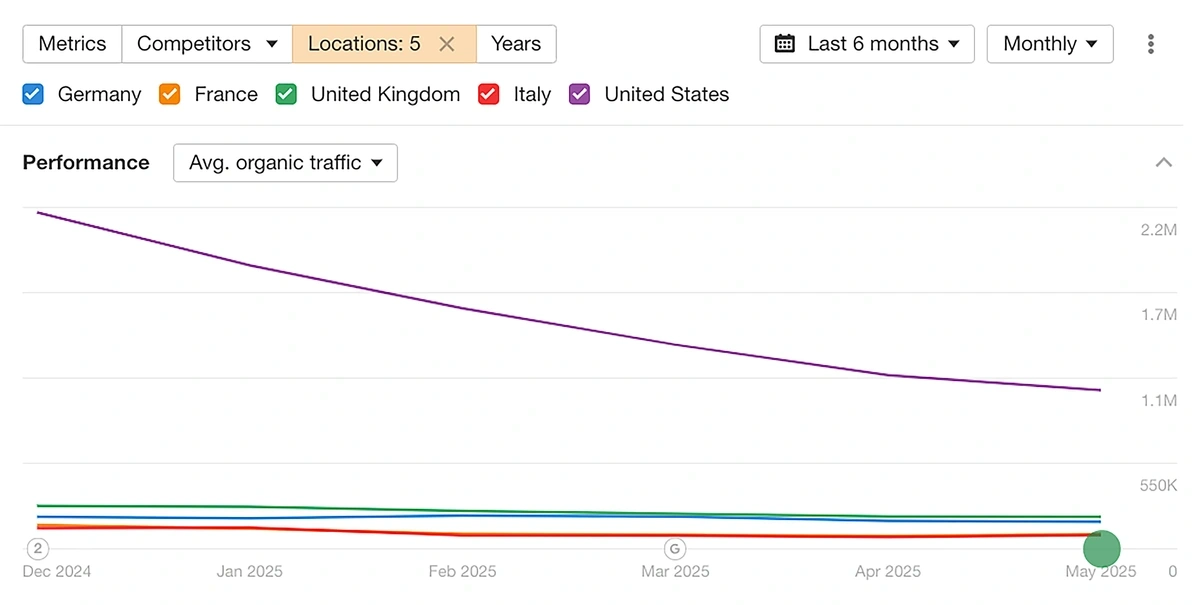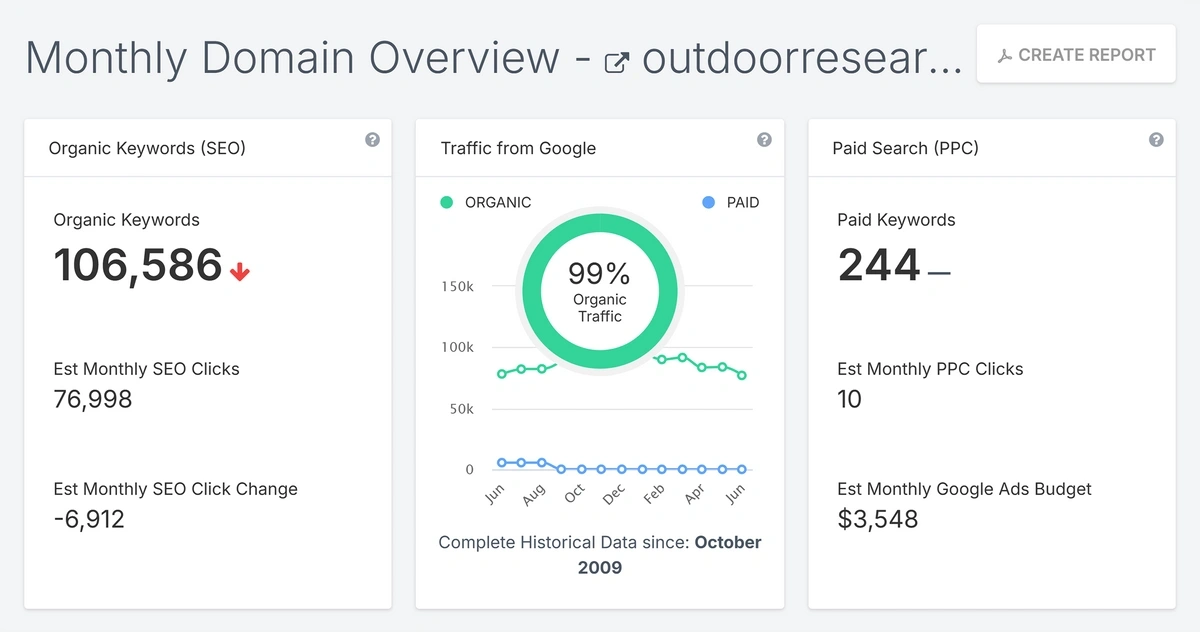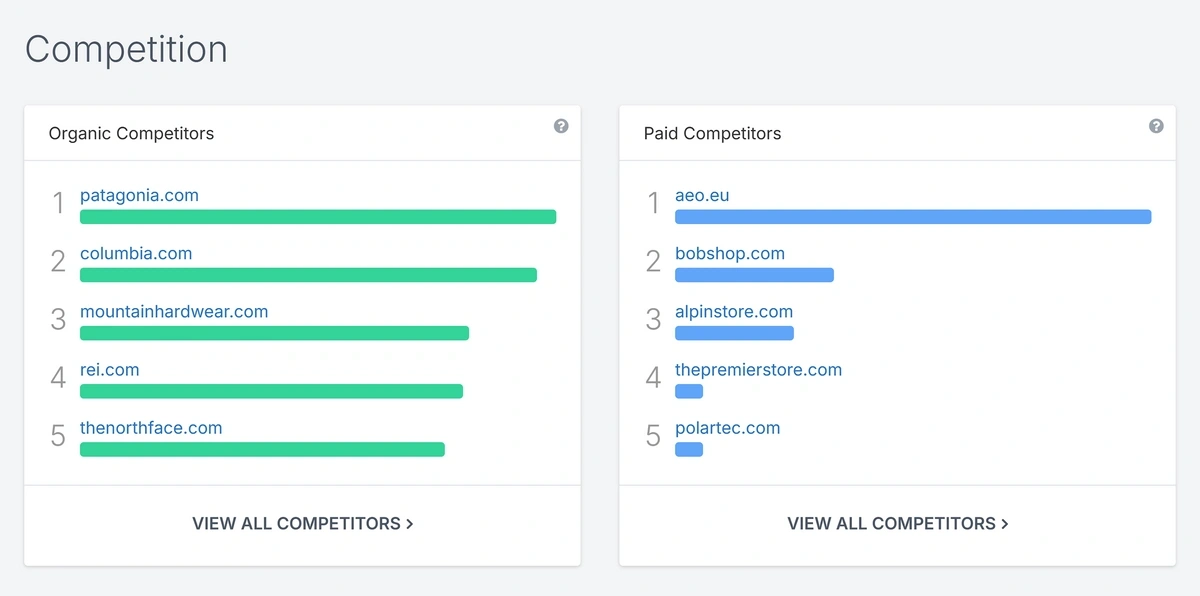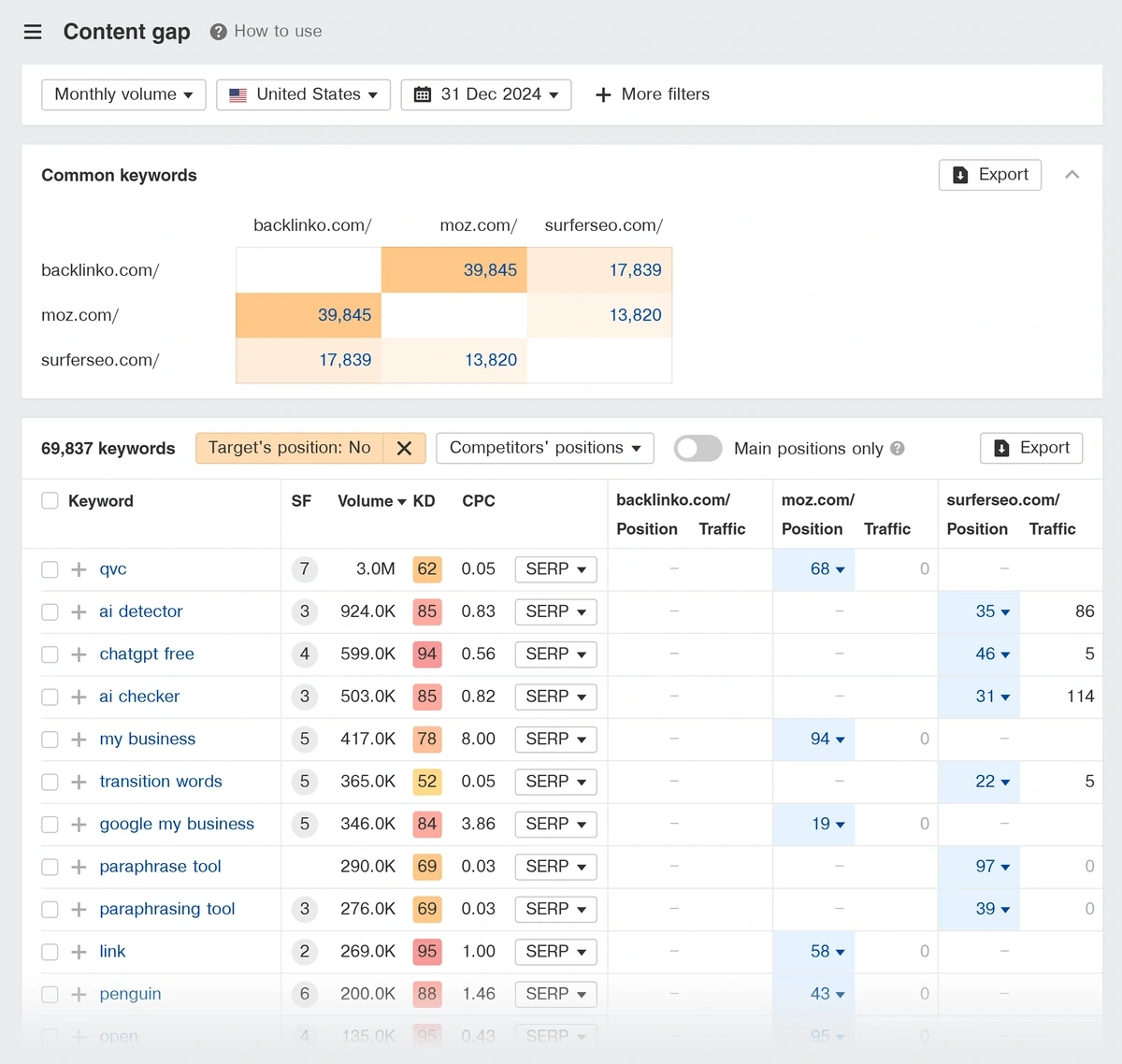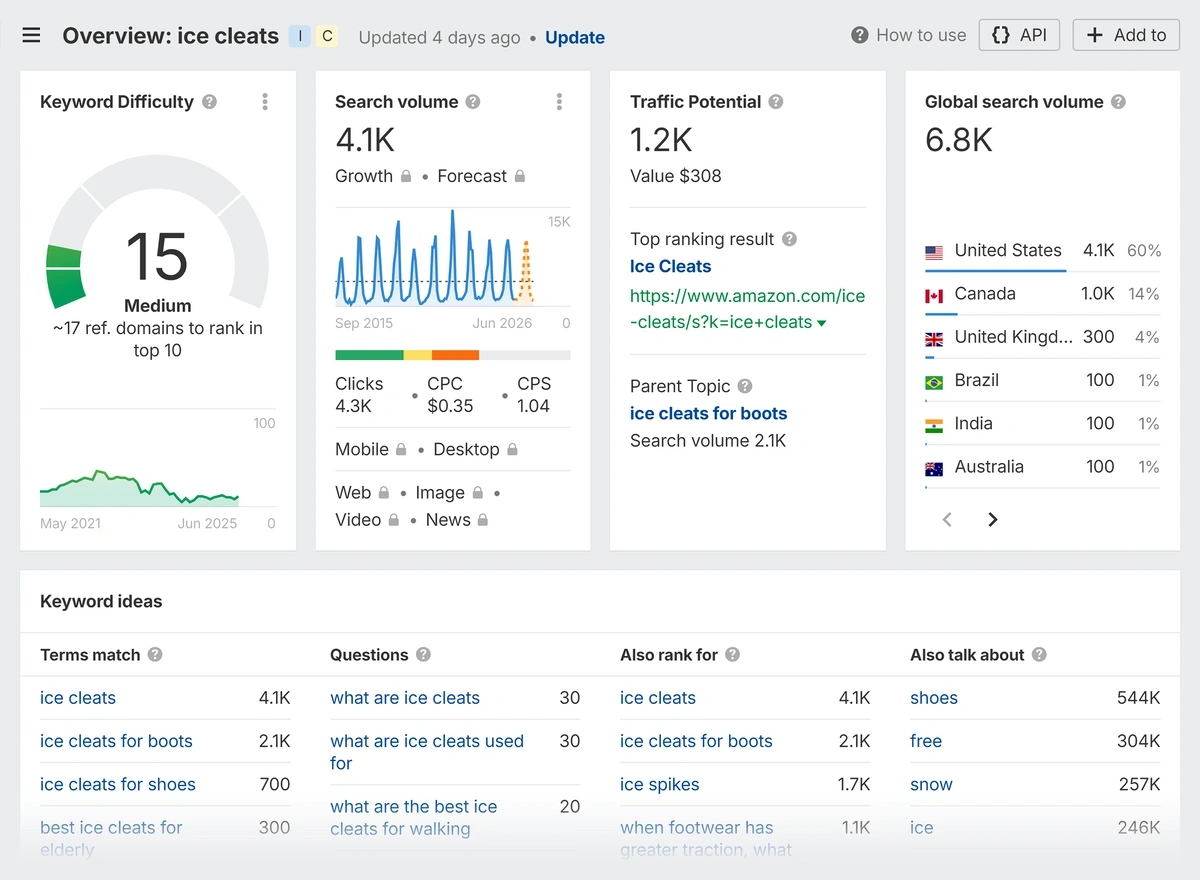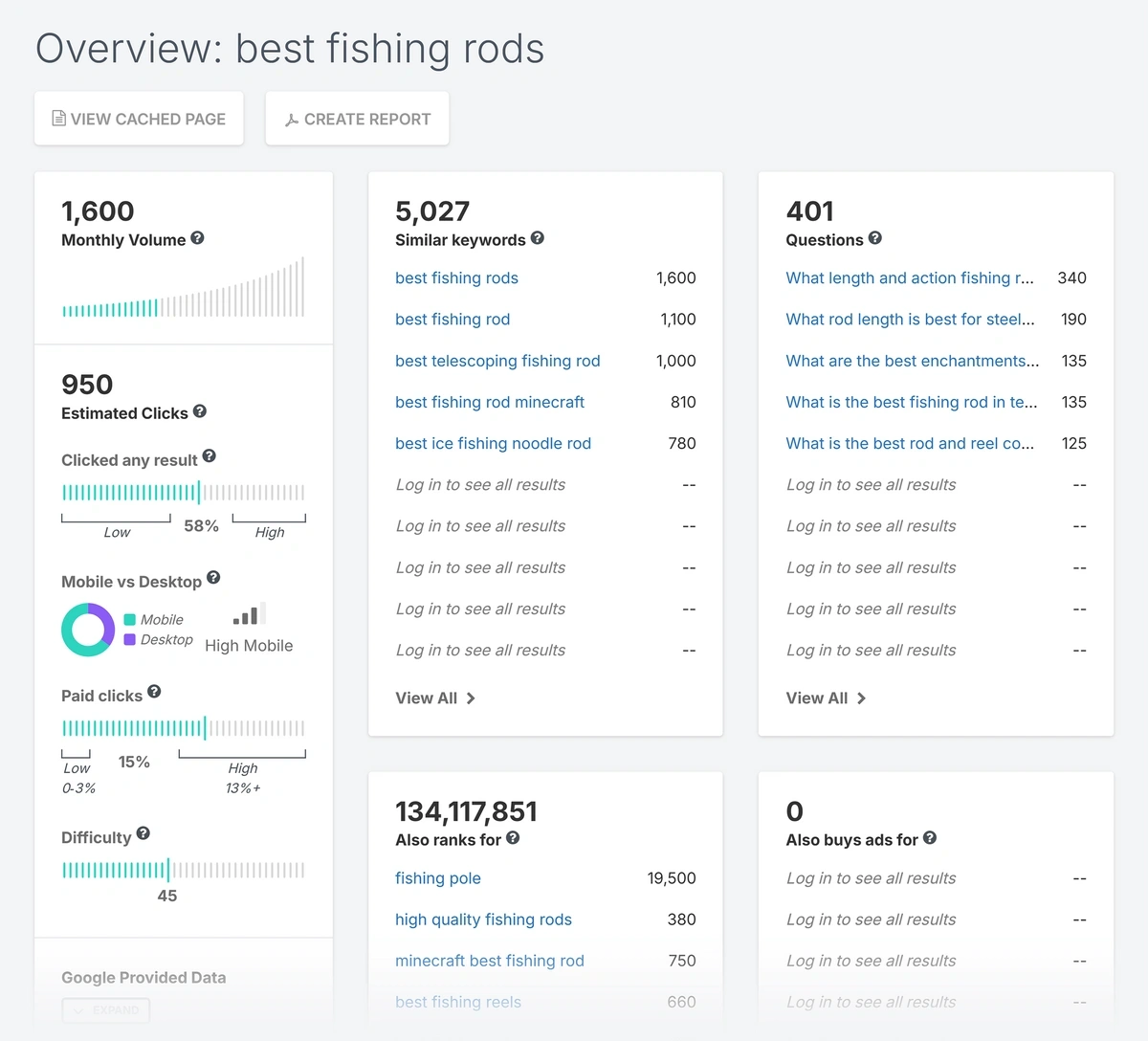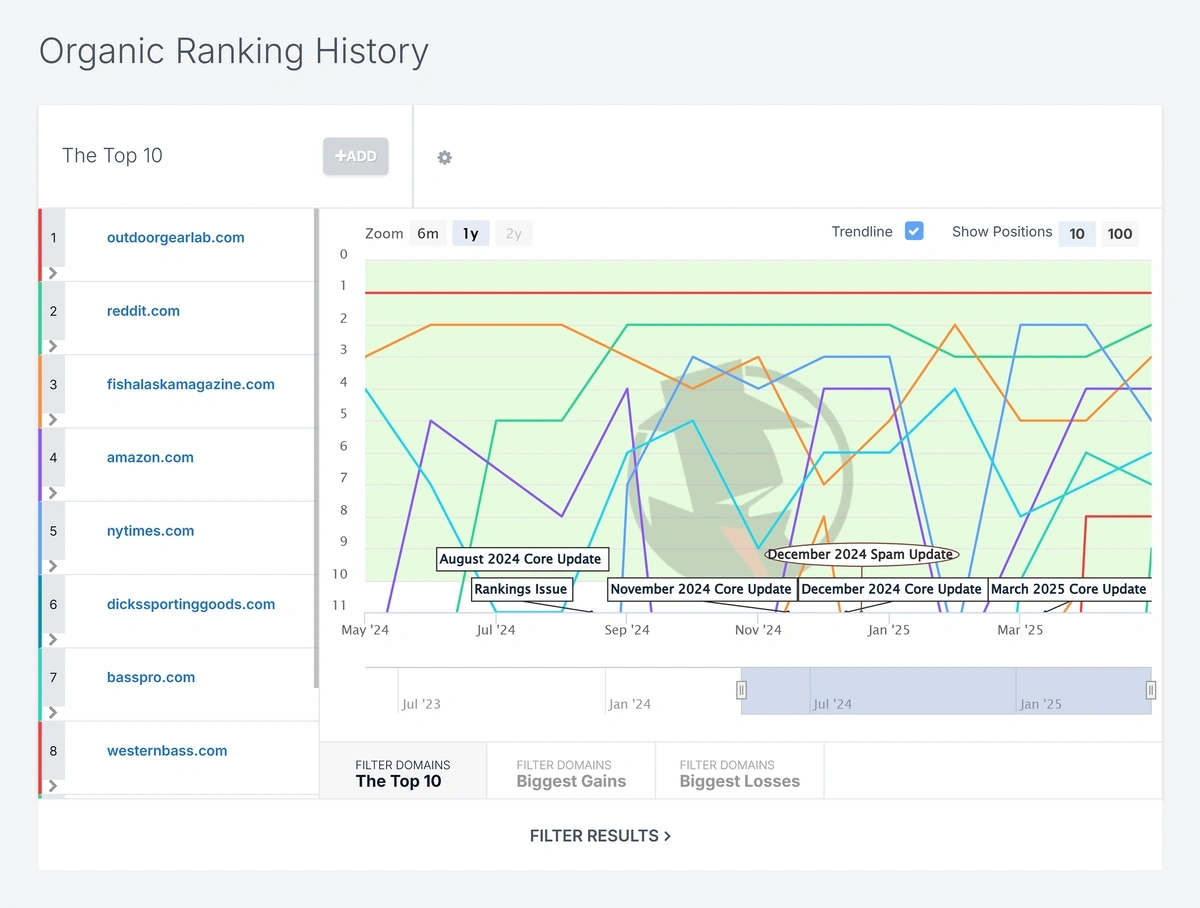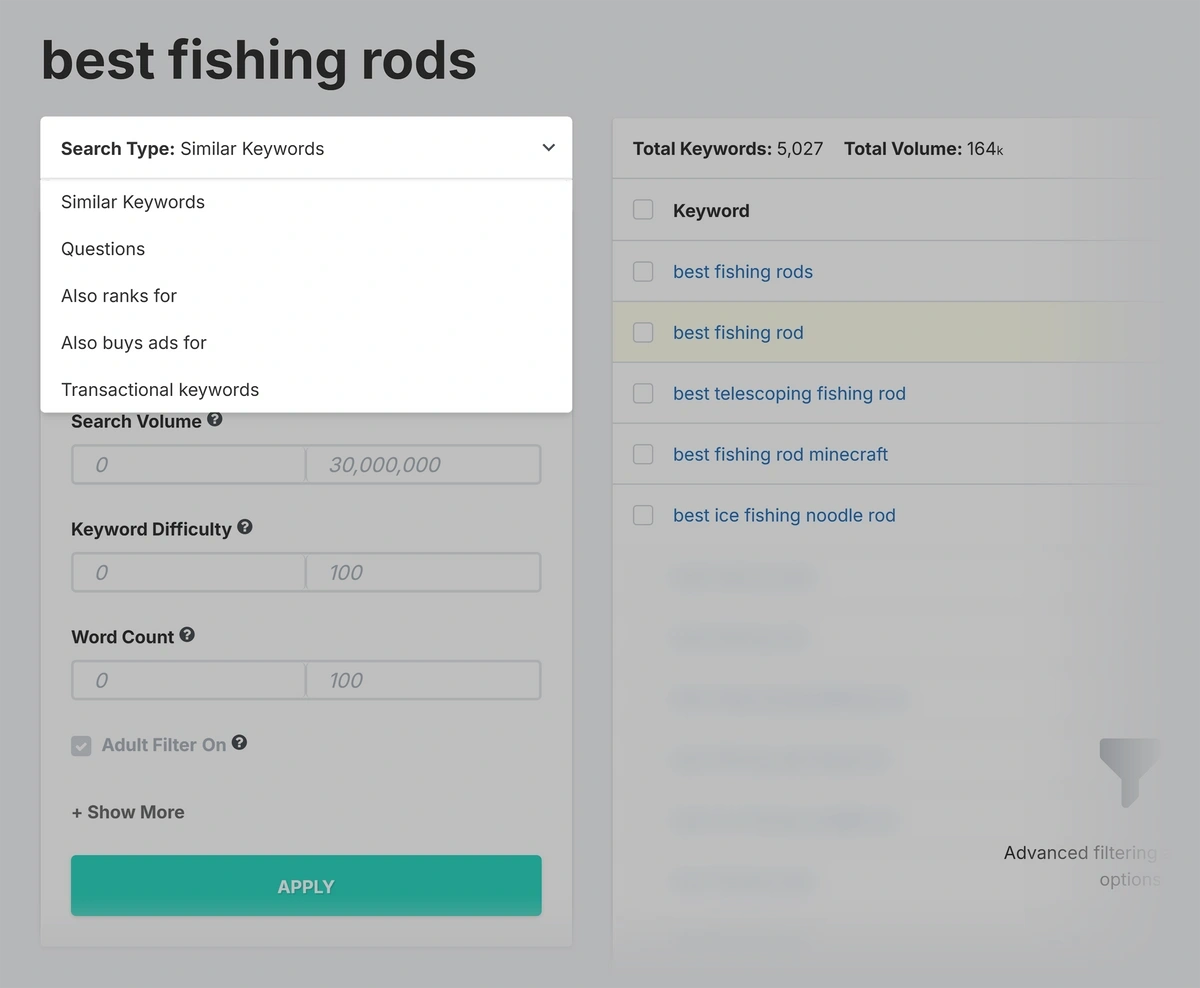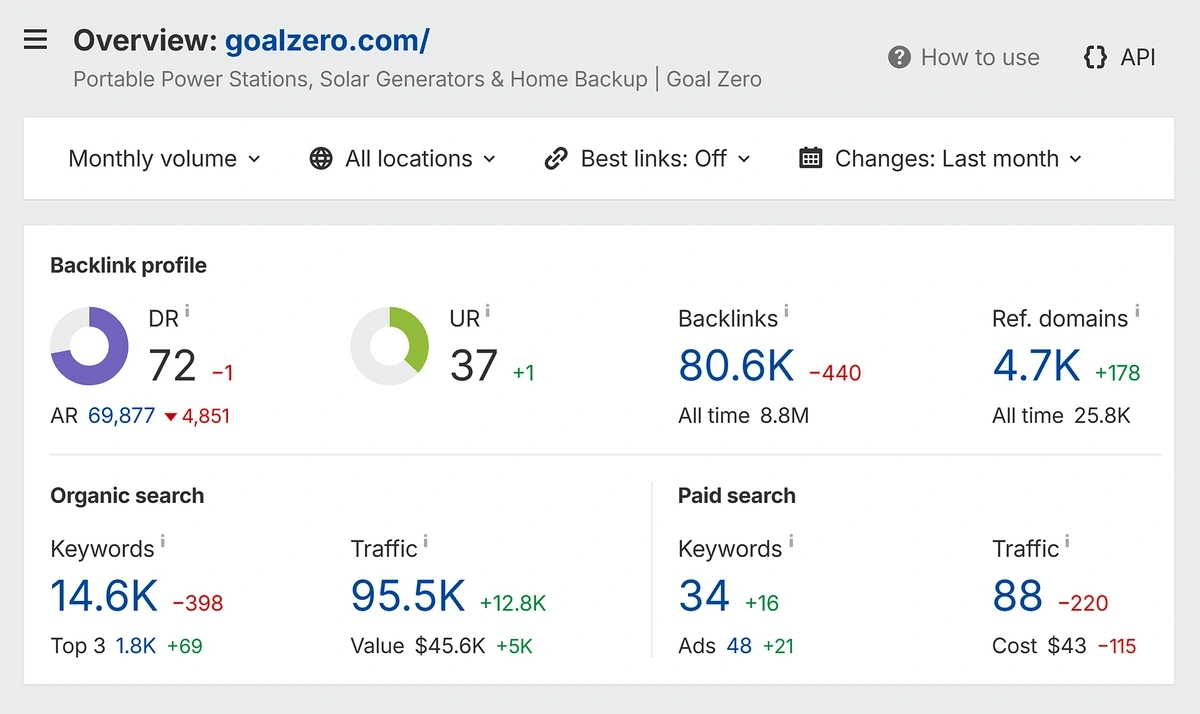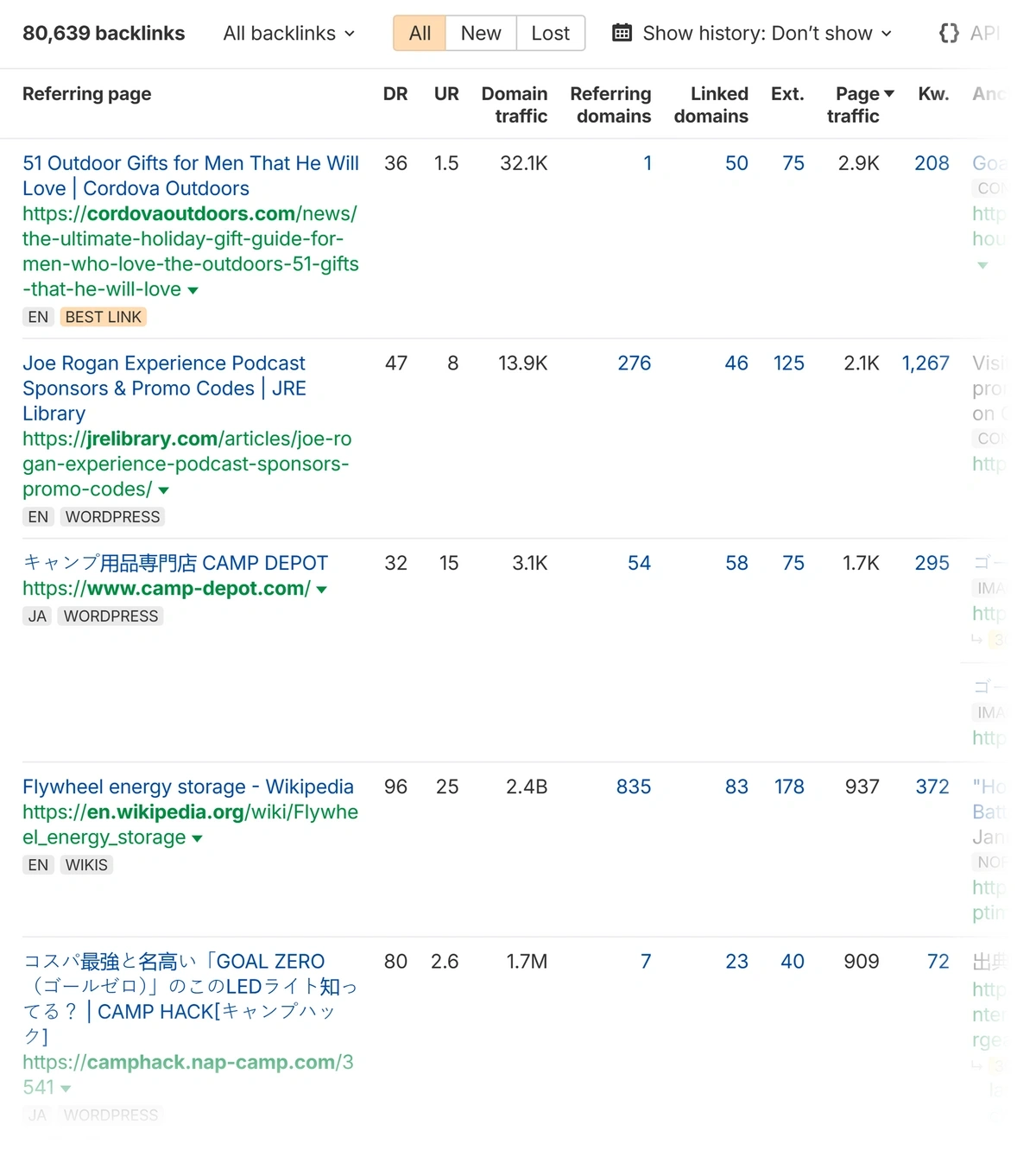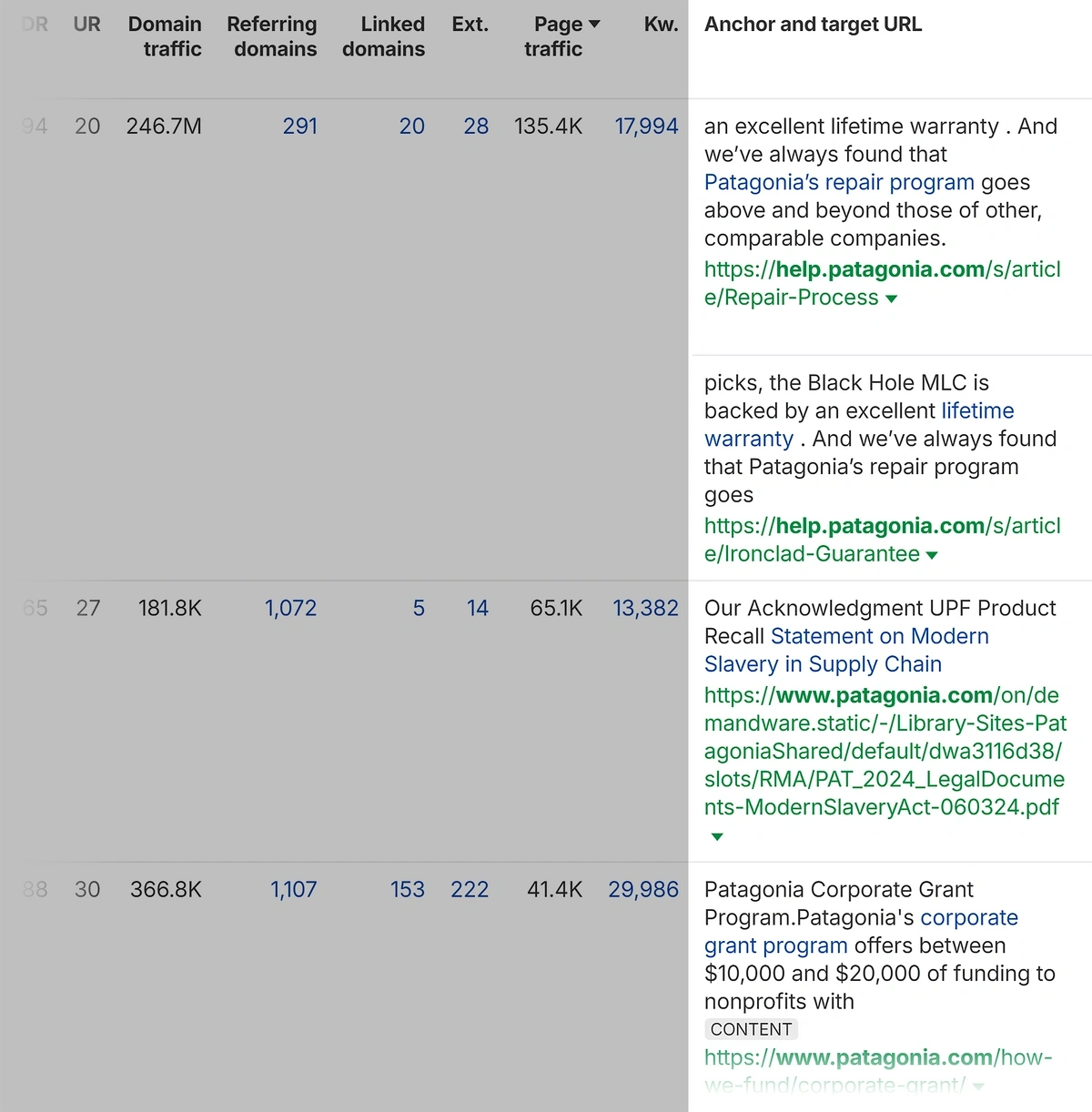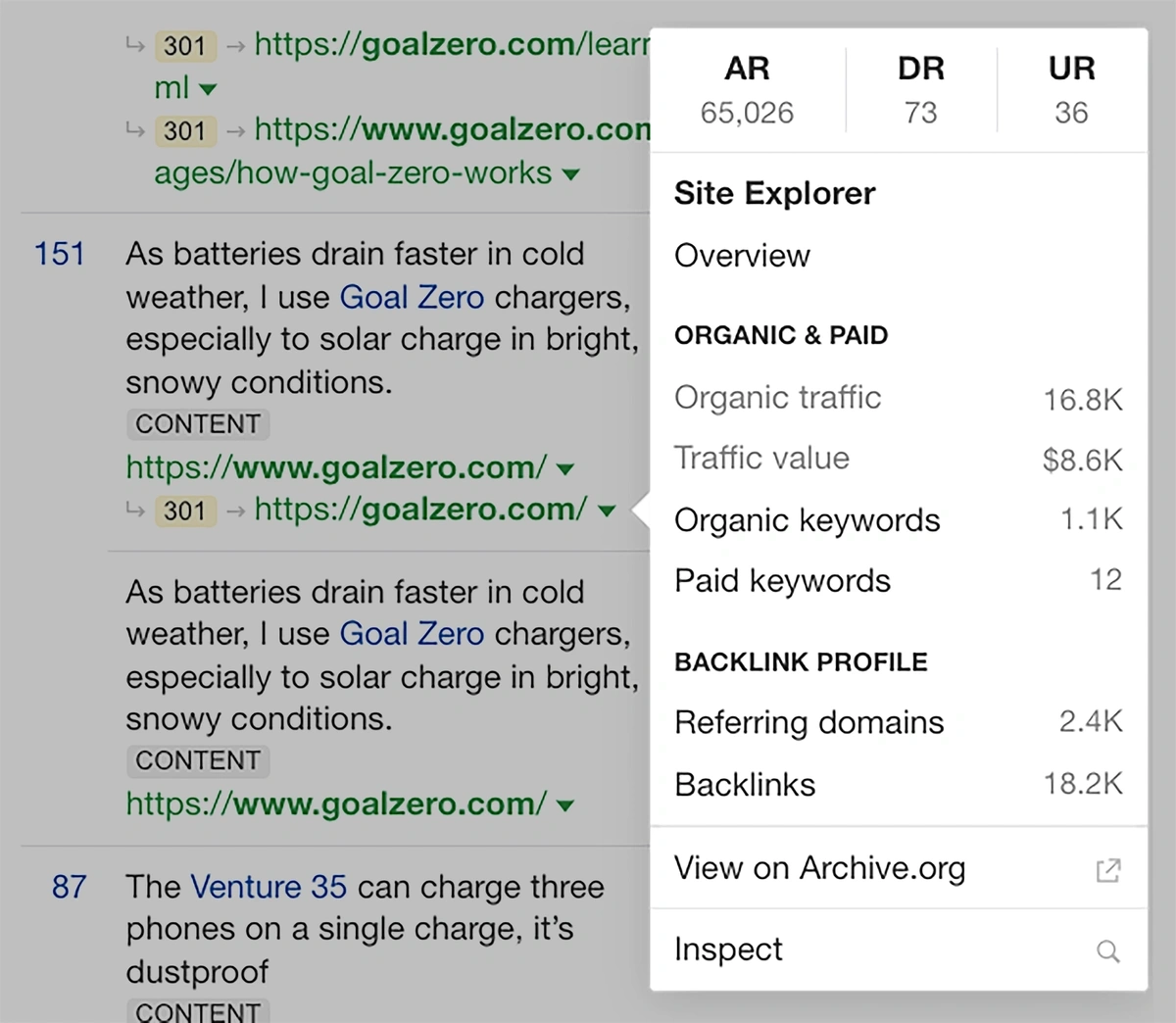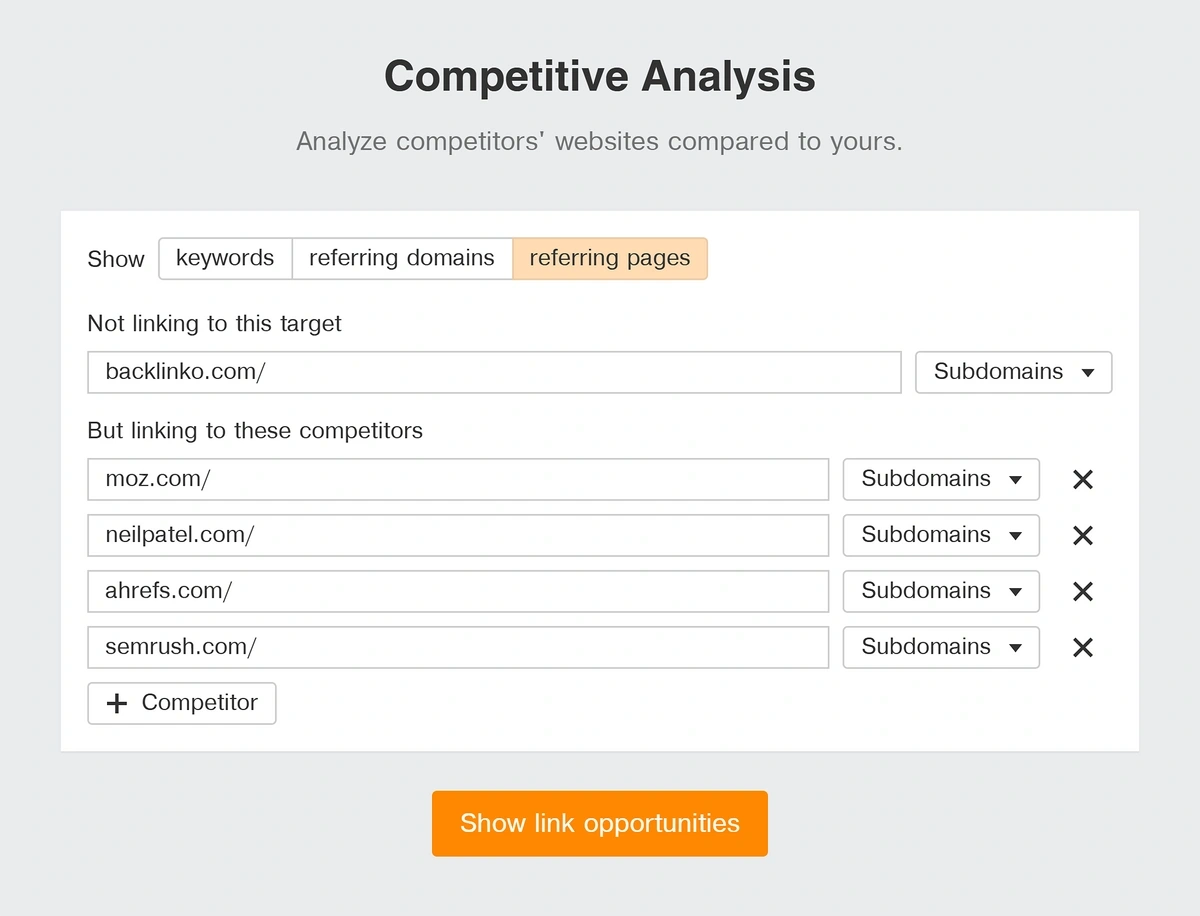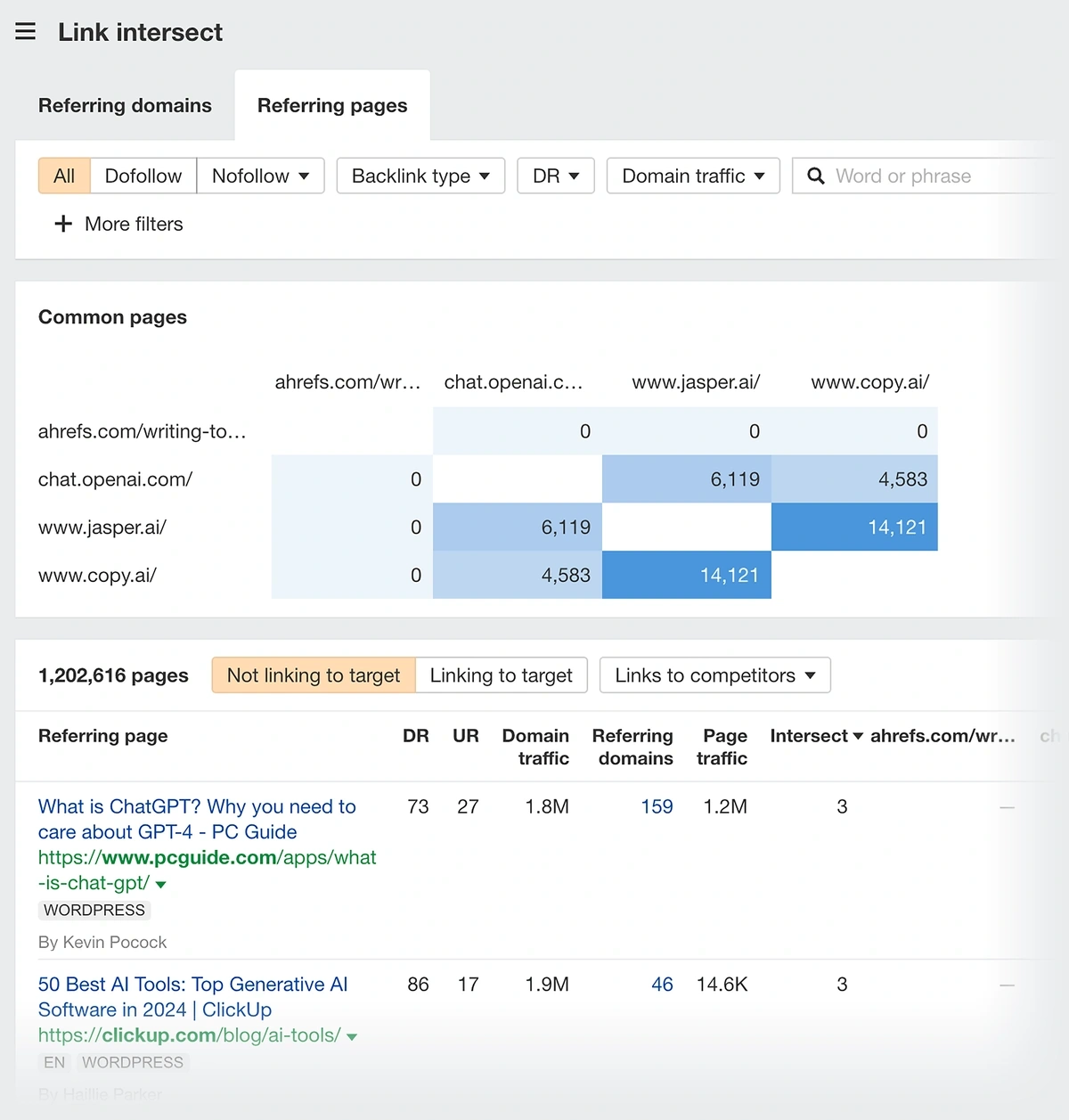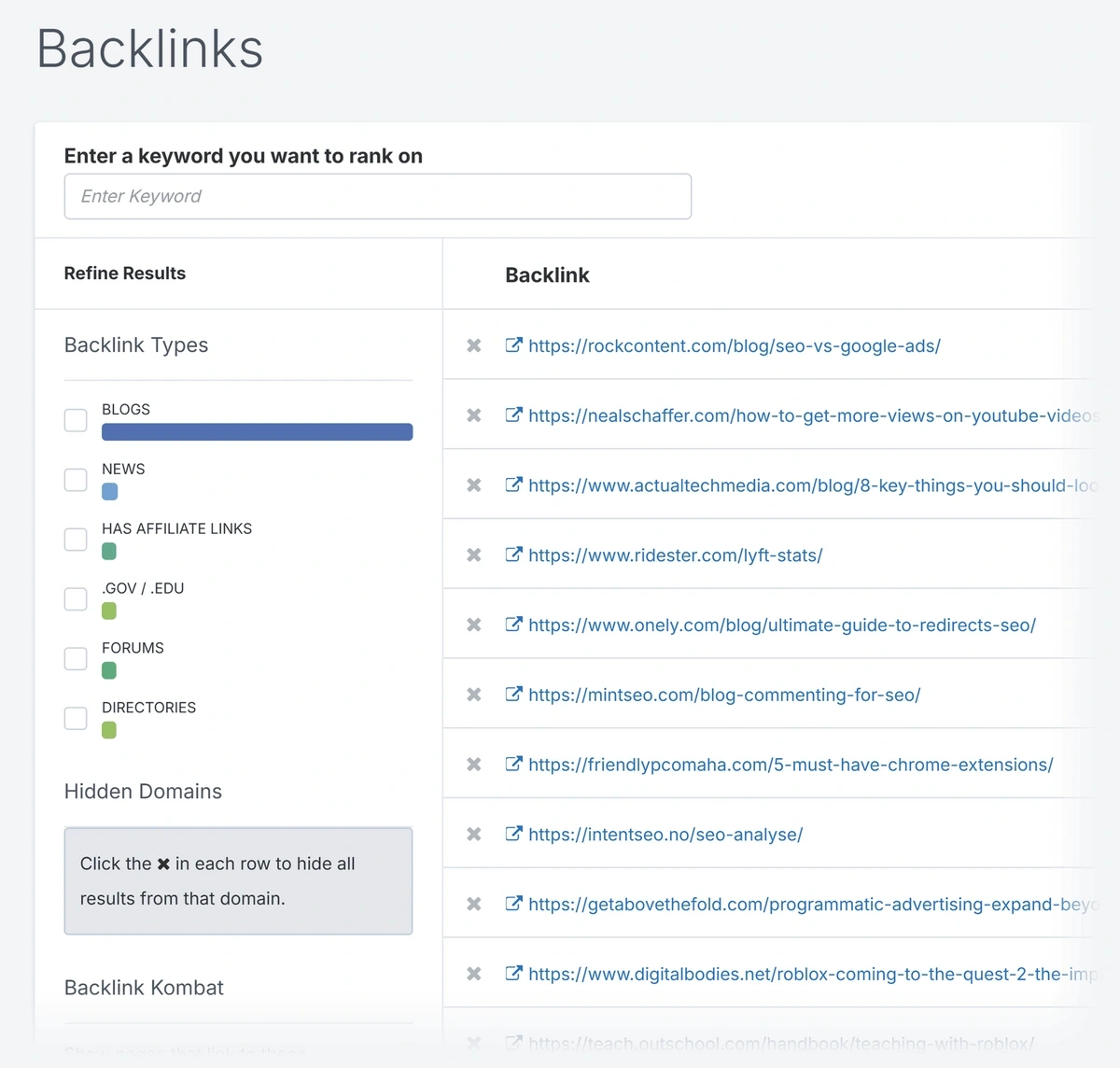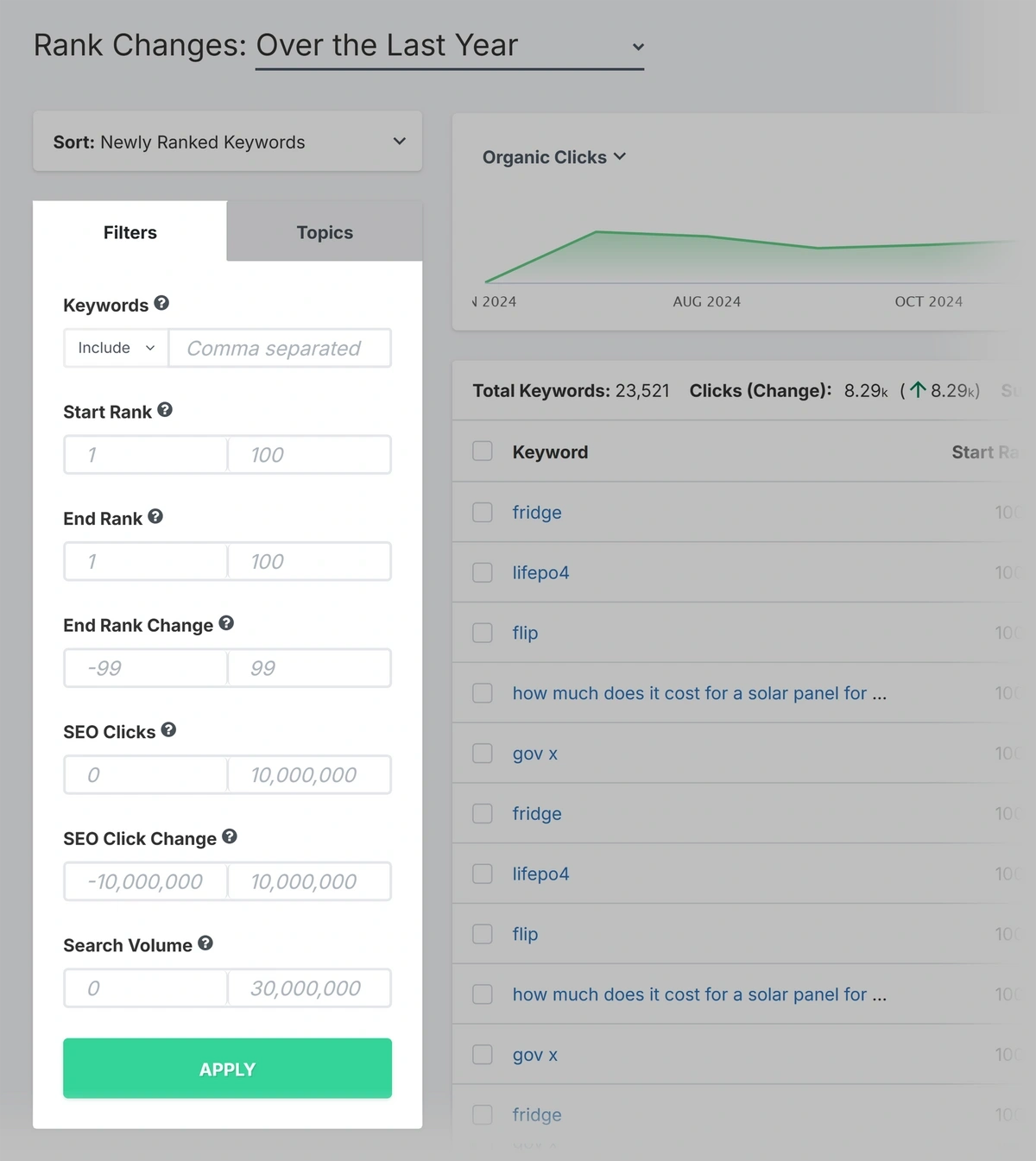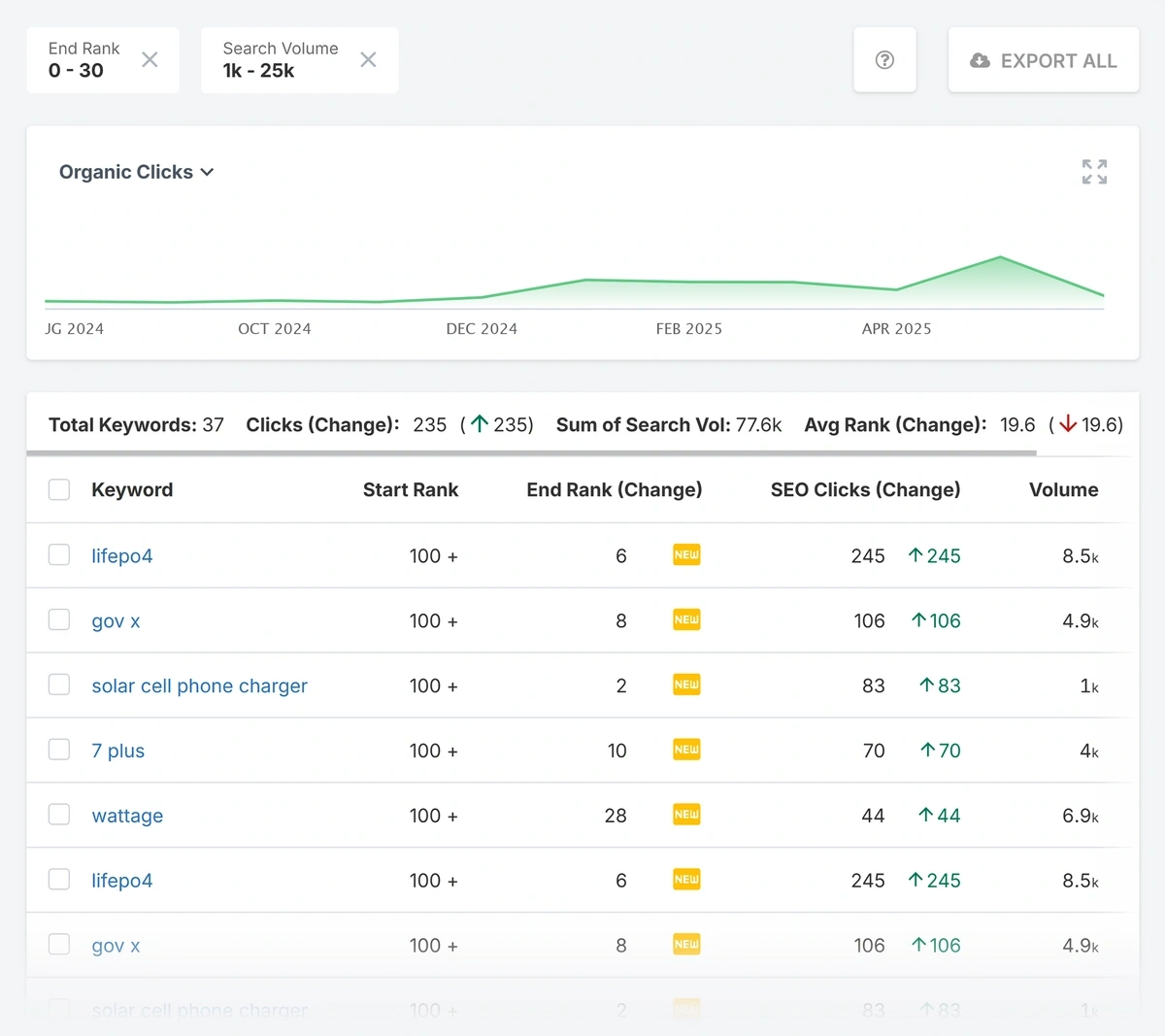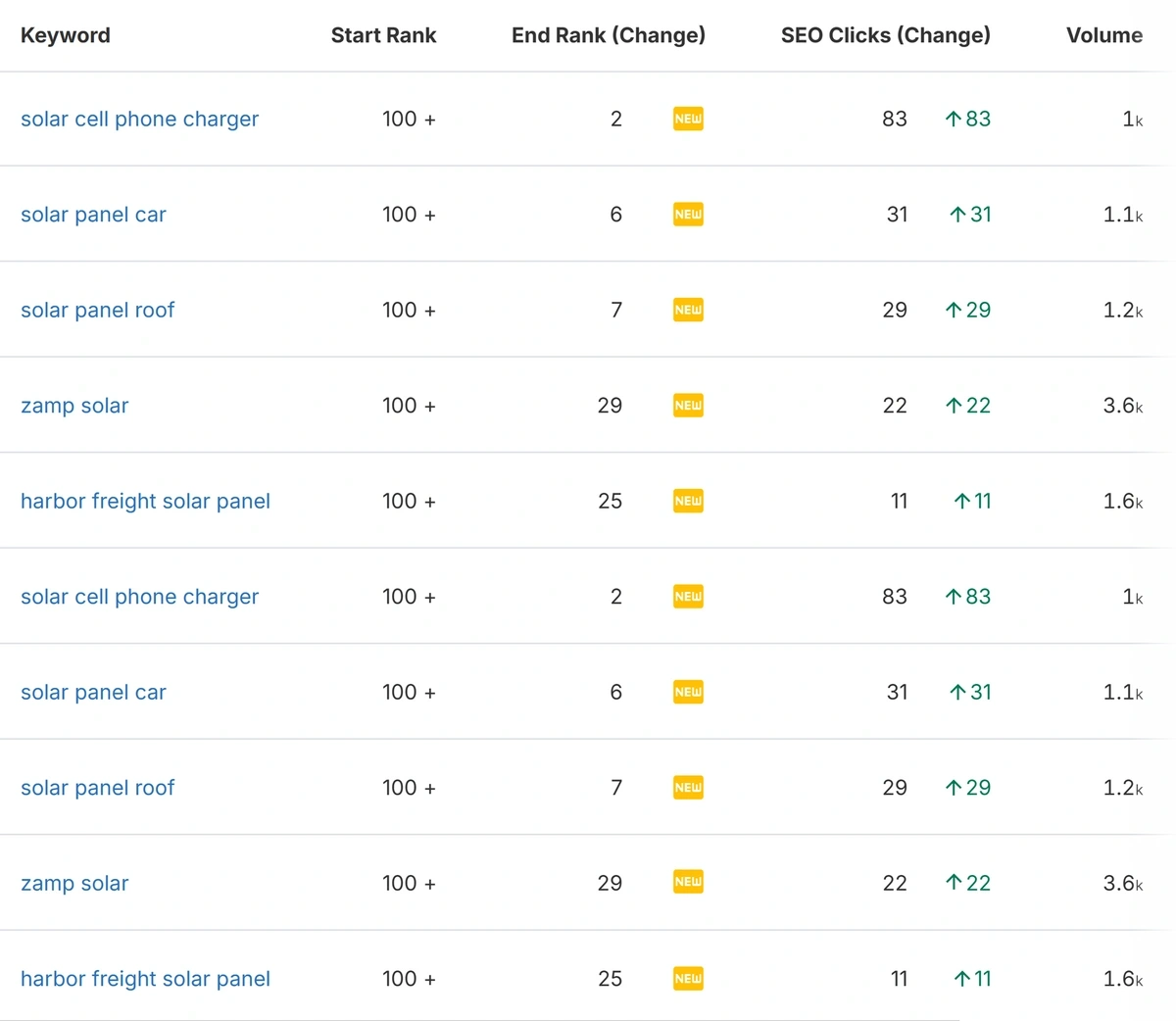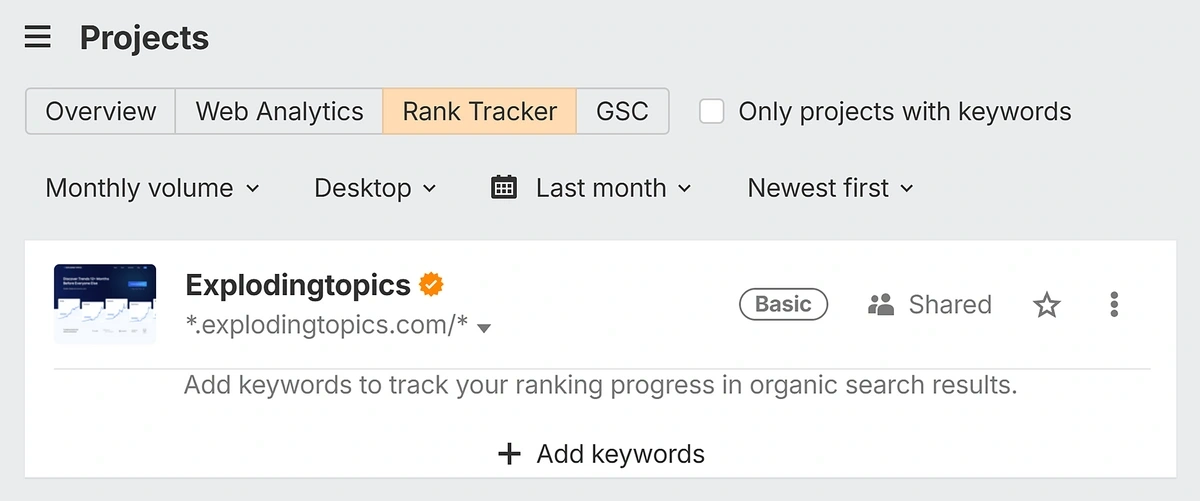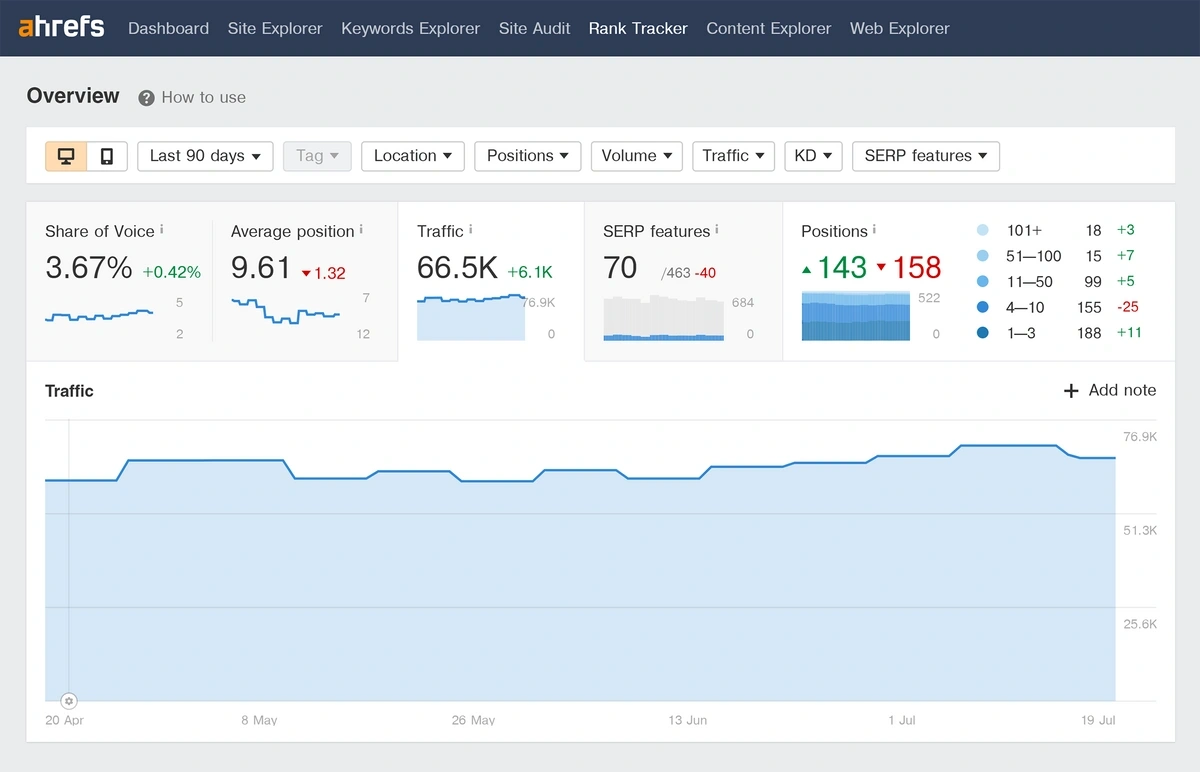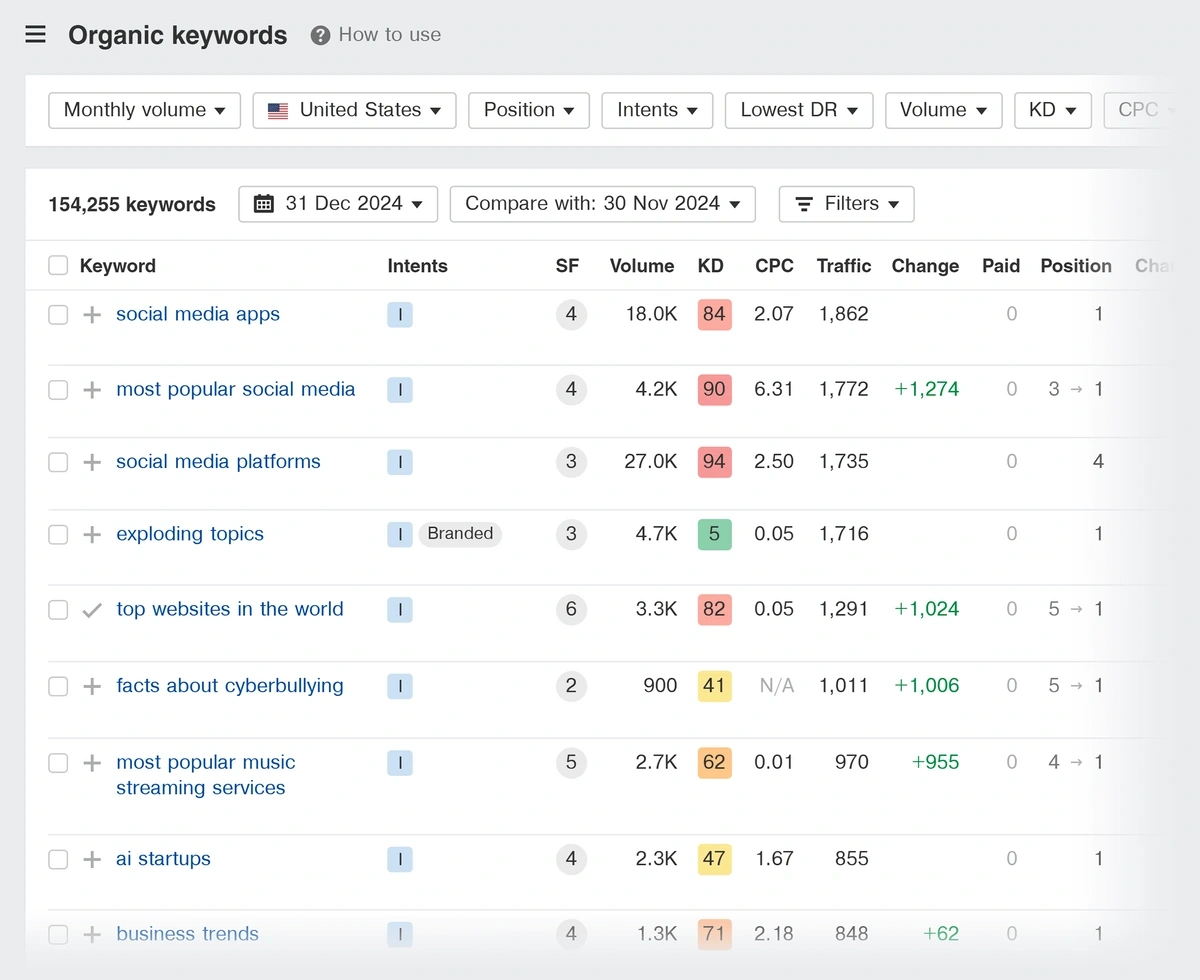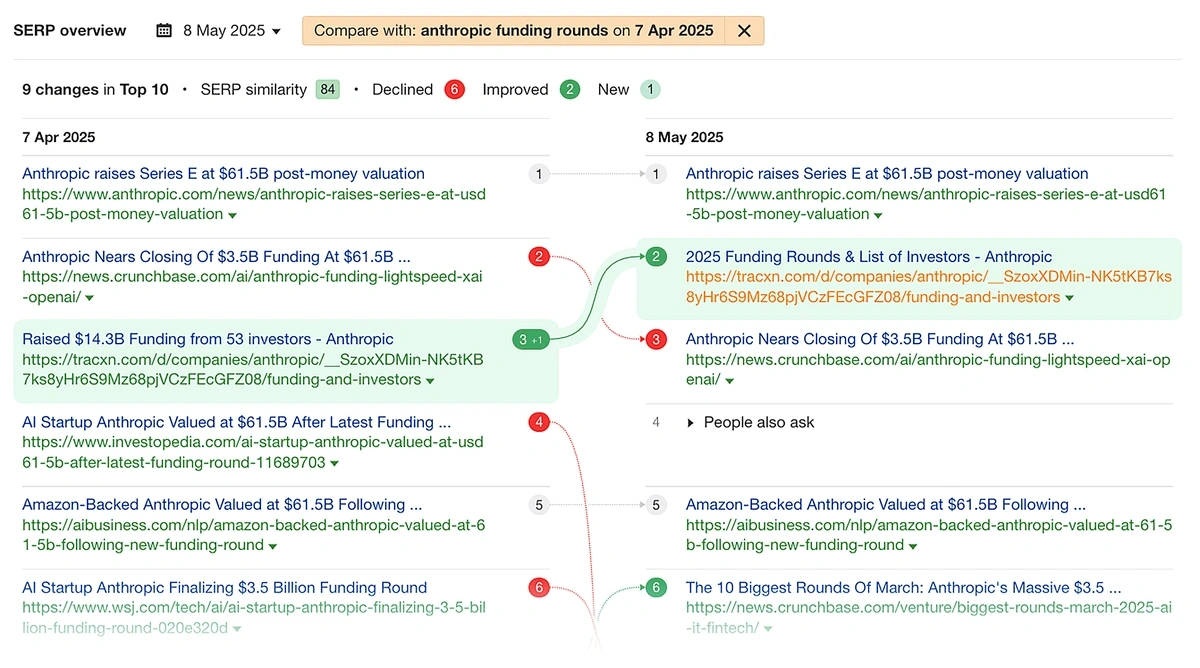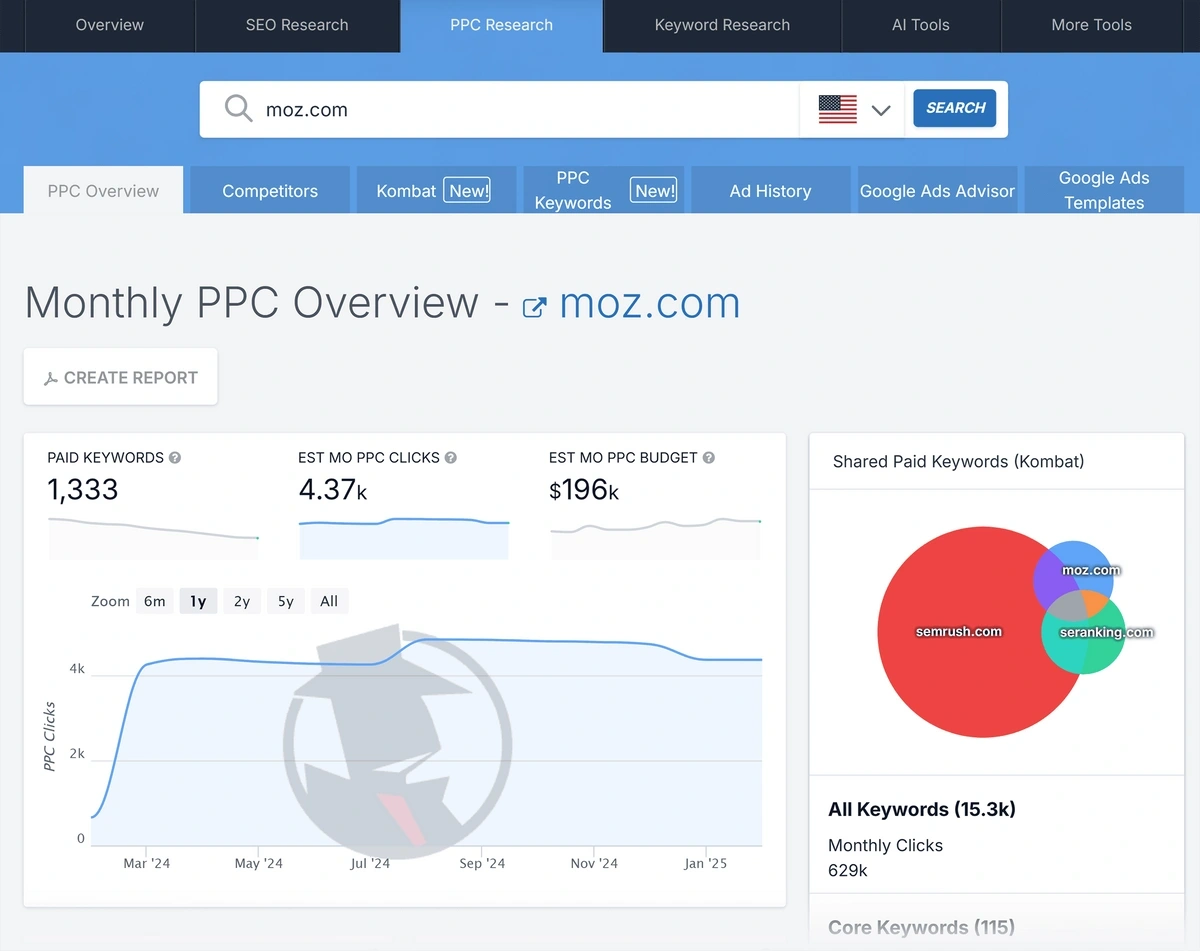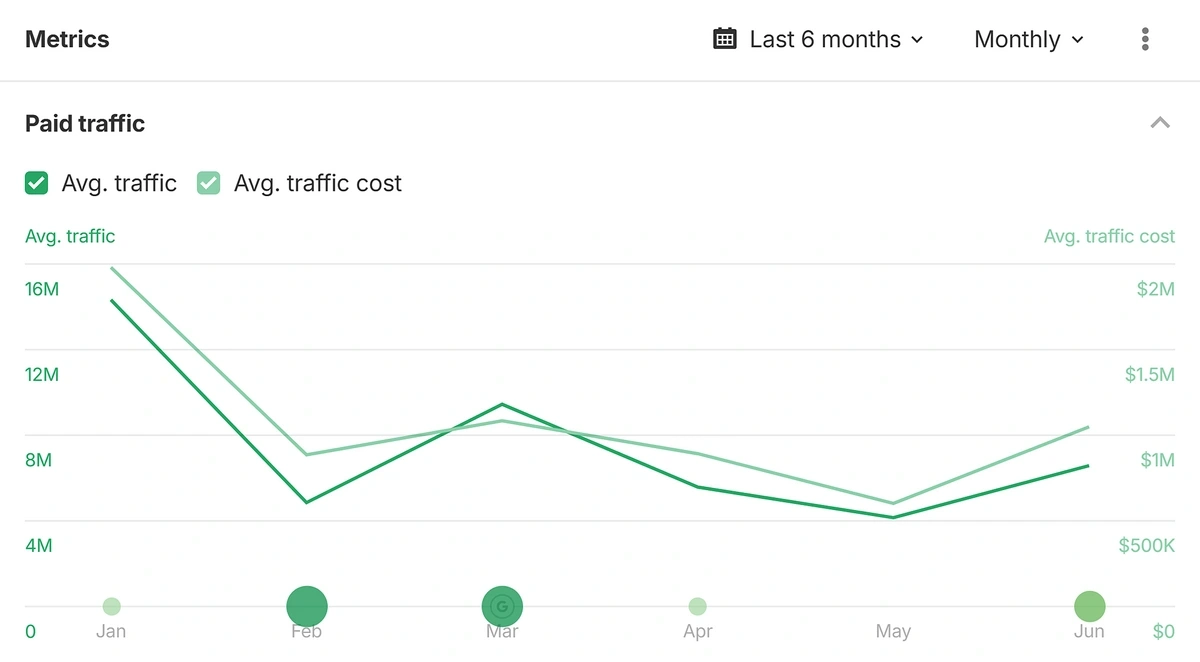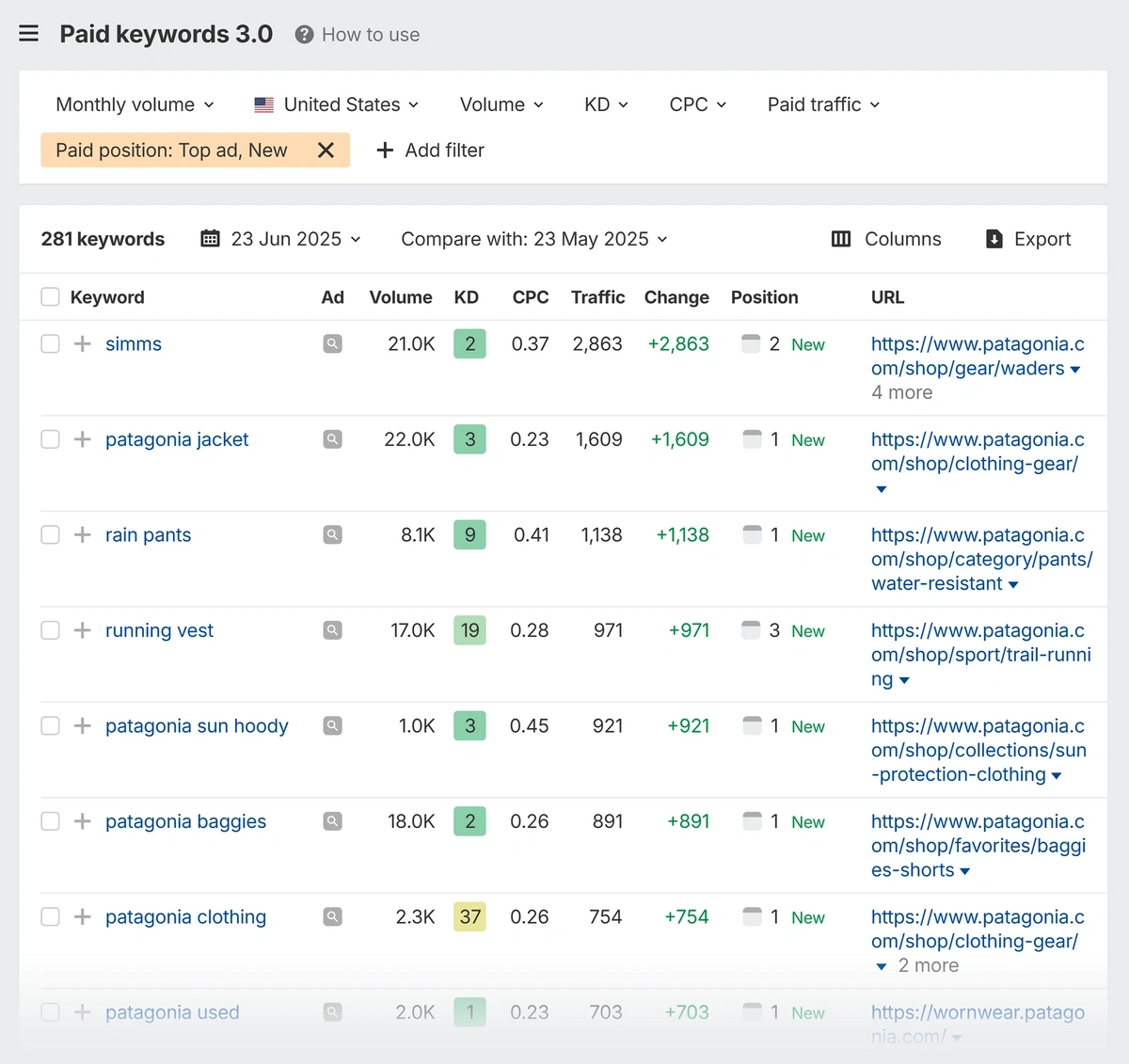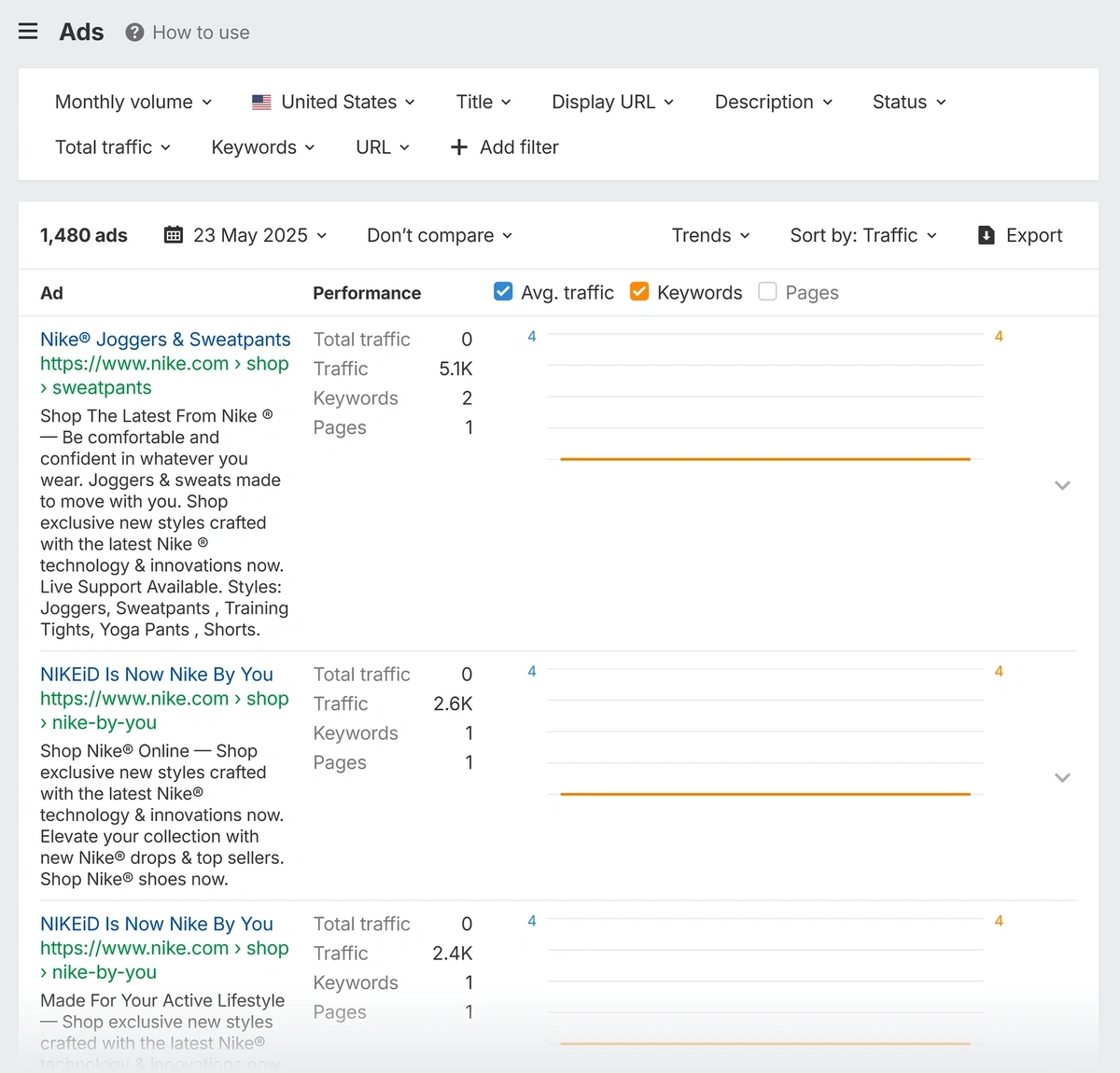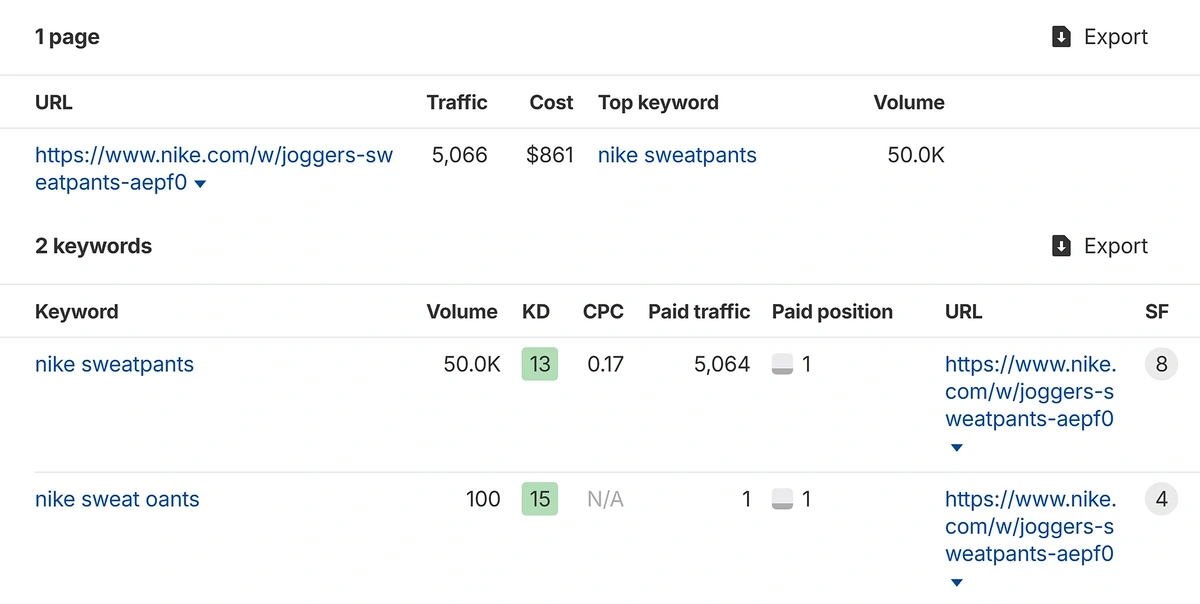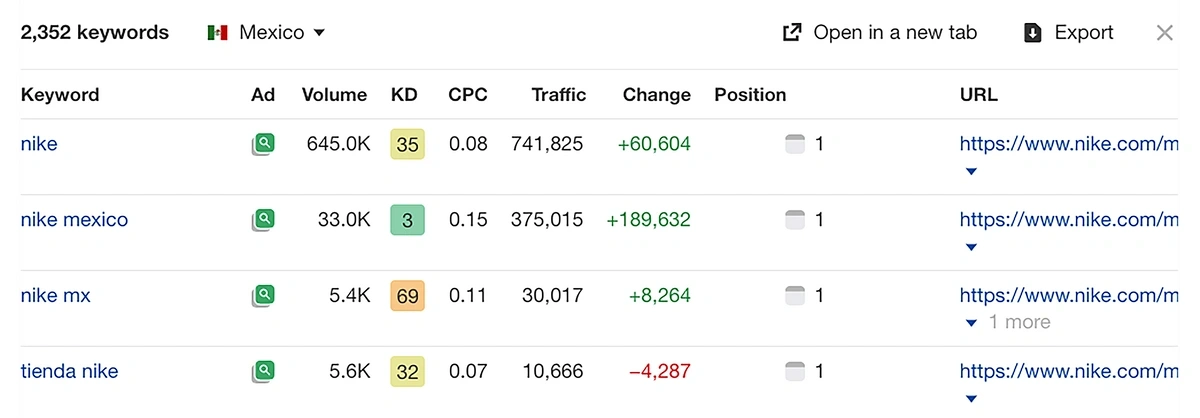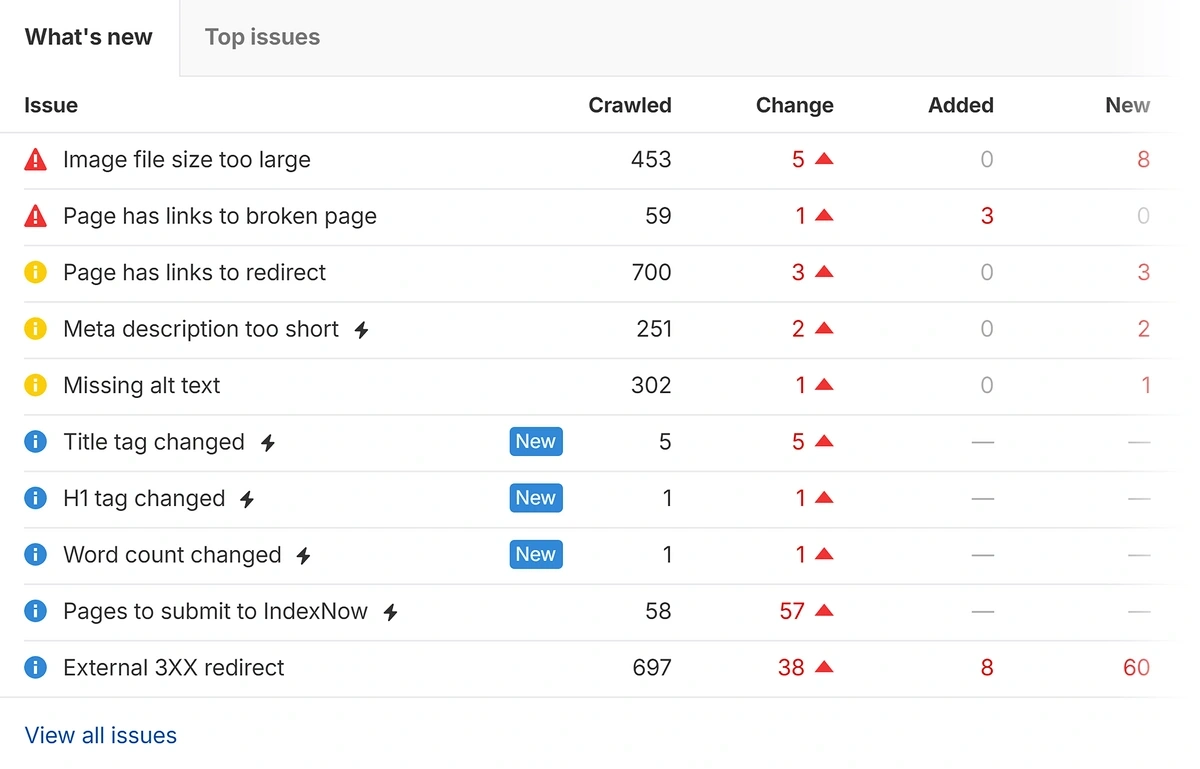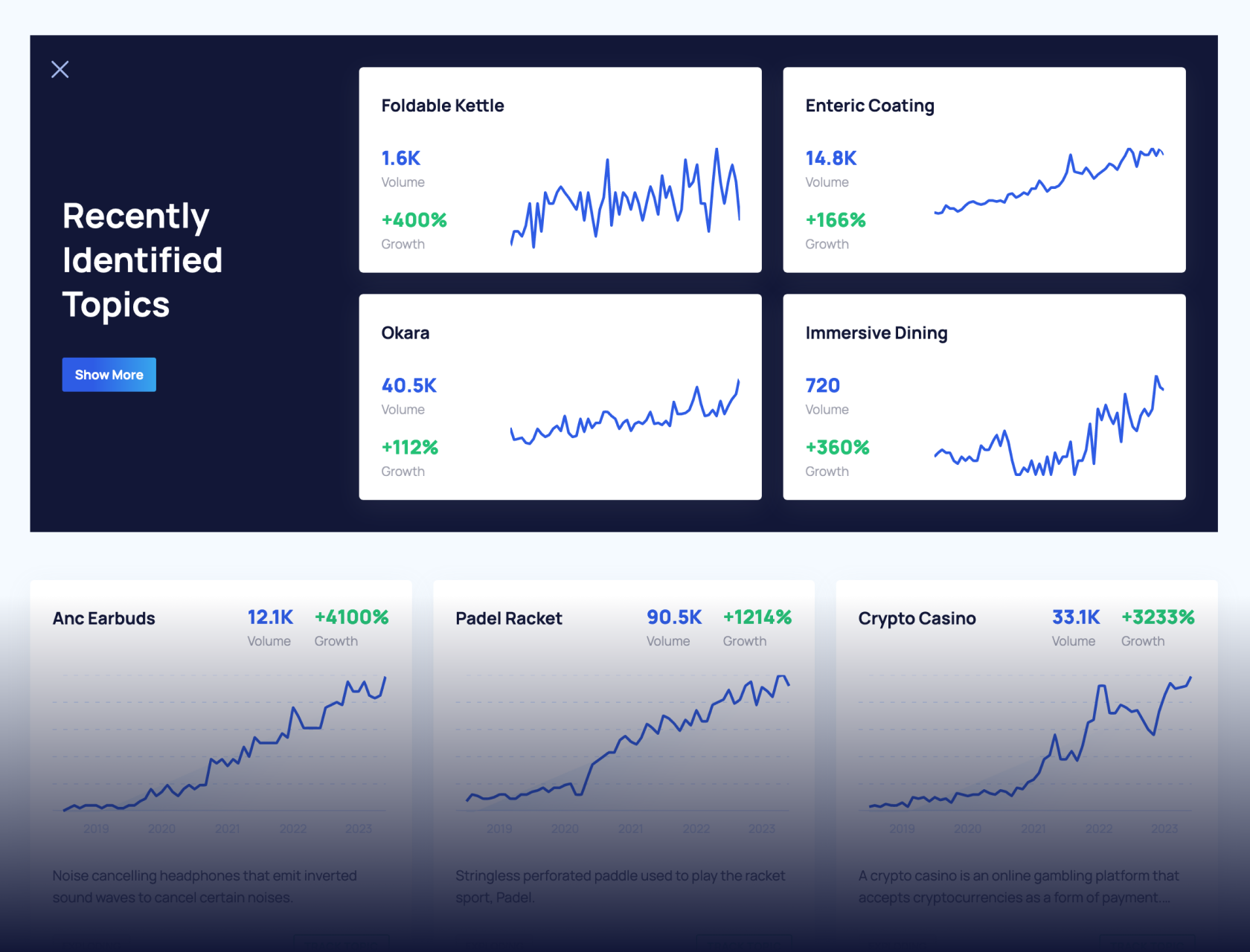
SpyFu vs. Ahrefs: Which is Best for Agencies in 2025?
Ahrefs offers enterprise-grade analytics, streamlined workflows, and premium agency tools. Can you replace it with SpyFu and get the same results?
The main difference between SpyFu and Ahrefs is the level of analysis available. Ahrefs provides far more data, filters, and metrics to help you analyze client or competitor sites.
| Feature | Ahrefs | SpyFu |
| Country/region-based data | 195 | 23 |
| Automated, scheduled reports | ✔ | ✔ |
| White-label reports | X | ✔ |
| Client-specific dashboards | ✔ | X |
| Agency listing | ✔ | X |
| API | ✔ | ✔ |
| Content optimization tools | ✔ AI Content Helper | ✔ RivalFlow AI |
| PPC research | ✔ | ✔ |
Build a winning strategy
Get a complete view of your competitors to anticipate trends and lead your market
SpyFu vs. Ahrefs for Domain Analysis
Ahrefs’ Overview makes it easy to surface critical insights. It caters to those who require clarity and precision in analysis. In my experience, agencies need more than what the SpyFu Domain Overview provides.
When you add your client’s domain to Ahrefs Site Explorer, you’ll get a dashboard displaying backlink profile and traffic trends.
Below that are a series of tiles, presenting top-level data, including:
- Traffic by country
- Organic keywords by intent
- Branded vs. non-branded traffic
These tiles strike a good balance between top-level overview and customizable detail.
For instance, the Performance tile offers tick boxes for 10 trends, including:
- Referring domains
- Average organic traffic
- Average paid traffic
Along the baseline of the chart, you’ll find annotations for major and minor Google algorithm changes.
You can use them to discern whether updates may have impacted traffic.
Click on the "View changes" link at the bottom of the algorithm popup, and a window slides out from the right, showing version changes made to the website during that period.
Here, we see a GitHub-style tracker at the top, along with a scrollable list of website changes made during that time period.
You can add competitors to this Overview chart.
However, to access more than 6 months of data for this feature, you’ll need either the:
- Standard plan (2 years of historical data)
- Advanced plan (5 years of historical data)
For each domain analyzed, you can quickly access the top sources of traffic, by country, to your site or to your competitors.
While Ahrefs’ Overview provides everything you need for domain analysis, SpyFu provides comparatively little.
SpyFu’s Domain Overview features a summary dashboard at the top.
The central chart, which offers “complete historical data,” is static, not interactive.
Additionally, it lacks the tickbox or dropdown options available in Ahrefs.
SpyFu does feature an Organic Competitors tile on the Domain Overview page.
Clicking on it leads you to a chart with trend lines of competitors. But this chart also lacks the features seen in the Ahrefs overview.
The trend line chart does list some Google algorithm updates, but not nearly as many as you see in Ahrefs.
Keyword Research
Keyword research identifies winnable opportunities for competitive advantage. Ahrefs’ keyword research tools are easy to use. They're also far more comprehensive than SpyFu’s tools.
Let’s start with some of the keyword research tools in Ahrefs.
Ahrefs Content Gap: Add your domain and one or more competitors to this tool, and you’ll get a list of keywords your competitors are ranking for, but you’re not.
Below, I compared 2 domains that sell outdoor gear.
Mouseover the SF column to see which SERP features appear in keyword results.
Ahrefs tracks 19 SERP features. SpyFu tracks 9. Semrush tracks 44.
Get More Search Traffic
Use trending keywords to create content your audience craves.
Along with Volume, KD (Keyword Difficulty), and CPC (Cost-per-click), you can click the SERP button and get a detailed analysis of results for that keyword.
Alternatively, you can toggle a button to reveal only the SERP data for the competitor’s article.
The example below targets “best fishing rods.”
We see that the competitor has 127 backlinks, and we can click on the number to view the individual backlinks.
This SERP overview is also accessible from the Ahrefs Keyword Explorer.
Keyword Explorer is the tool you’d use to research a single keyword to plan competitive content.
We entered “ice cleats.”
The dashboard displays expected metrics, such as Keyword Difficulty and Traffic Potential.
You’ll also get related keyword ideas, like “ice cleats for boots” and “best ice cleats for elderly.”
You can also use the Organic Keywords report to research keywords a domain is ranking for.
Here you can filter by branded and non-branded terms, search intent, and more.
SpyFu’s Keyword Overview features visuals to the left, instead of a dashboard across the top.
Scroll down to see the Organic Ranking History chart. SpyFu automatically adds 9 competitors to the chart.
The chart is interactive, but feels cluttered.
You can filter this chart multiple ways, including by Biggest Losers and Biggest Gains (below).
SERP features: Compared to Ahrefs’ 19 SERP features, SpyFu tracks 5. These 5 don’t include AI Overviews, and there are many local and e-commerce SERP features missing.
SpyFu also doesn’t tag keywords with the 4 search intents.
Instead, it offers one intent: Transactional. This can be accessed via a dropdown menu in the Related Keywords tab.
Backlink Analysis and Link Building
While backlinks are no longer a top-three ranking factor in Google, they still drive traffic and sales. Analyzing competitors’ backlink profiles opens up new opportunities for outreach and link building.
SpyFu cannot sort by fundamentals, such as dofollow vs. nofollow. And while I wish Ahrefs included SpyFu’s “Backlink type” filters, it’s trivial for Ahrefs to add them in the future.
Starting with Ahrefs, I’m analyzing the solar device company GoalZero.com.
Clicking on Backlinks takes me to Ahrefs’ Backlink profile tools.
Here I can filter by backlink type, such as Canonical, Redirect, or Image in anchor.
I can further filter by:
- Domain rating (range)
- Link attributes (dofollow, nofollow, UGC)
- Domain traffic (range)
- Words or phrases
In the results table, you’ll see the referring page, followed by column metrics such as referring domains.
Further to the right, you’ll see “Anchor and target URL.” This is a nice feature that provides immediate context.
Clicking the green wedge at the bottom of a target URL pulls in Site Explorer metrics via a small popup.
Ahrefs’ backlinks gap tool is called Link Intersect.
Add your domain and one or more competitors to discover which sites are linking to them and not linking to you. The specific URLs are included.
Click “Show link opportunities,” then tab between “Referring domains” and “Referring pages” for details.
Navigating within Ahrefs for Link Intersect is not as intuitive as I expected.
- Link Intersect doesn’t appear in any menu.
- Instead, you go to All Tools > Competitor Analysis.
And from Competitor Analysis, you choose
- Keyword
- Referring domains
- Referring pages
Additionally, after adding a filter, you must click a second button: “Show results.” Only then are you taken to Link Intersect.
I find the Semrush Backlink Gap tool provides a more intuitive layout and efficient filtering.
Want to Beat Your Competition?
Find out who’s linking to them and build a better backlink strategy.
SpyFu: Compared to Ahrefs, SpyFu also has a more intuitive architecture. You simply go to SEO Overview > Backlinks.
This list of backlinks is sortable by:
- Domain monthly organic clicks
- Page monthly organic clicks
- Domain strength
- Ranked keywords
- Outbound links
There’s a helpful left-hand sidebar displaying site types behind the backlinks.
Here we see that most of the backlinks for this page are from blogs.
SpyFu’s backlink gap tool is called Backlink Kombat. It’s located right there, on the same page, in a left-hand sidebar.
Overall:
- SpyFu’s backlink gap tool is easier to find than Ahrefs.
- Ahrefs’ gap tool provides more filters, but its backlink type filter lacks the forum, blog, affiliate, .gov/.edu, and directory options found in SpyFu.
Want to Beat Your Competition?
Find out who’s linking to them and build a better backlink strategy.
Rank Tracking
Rank tracking allows you to monitor a domain’s position in search results for specific keywords.
The SpyFu trackers are well-designed, but Ahrefs is more comprehensive. If your agency serves an international clientele, consider that Ahrefs allows you to retrieve results for 175+ countries and geographic regions compared to SpyFu’s 23.
That said, SpyFu’s new Rank History tool has a clean and intuitive interface. I instantly liked it. You can:
- Add a domain and select a time frame from a dropdown
- Filter by 1 of 23 countries
Filters are in the left-hand sidebar.
I filtered Goal Zero keyword rankings by positions 1-30 and within a set volume range.
Another nice feature: the Topics sidebar. This displays seed keywords.
For example, clicking on “Solar” filters for all ranking keywords that contain “solar.”
You can also use the SEO Keywords tool to track rankings for your domain or a competitor.
This tool differs in that it includes:
- Keyword difficulty
- CPC
- Desktop searches (as a percentage of all)
Ahrefs Projects: To track by domain in Ahrefs, you can enter your owned sites in the main dashboard tab.
These are your “Projects.”
From here, you select Rank Tracker.
You can manually add keywords to track or bulk upload them by CSV file.
At the top of the Ahrefs Rank Tracker, you’ll find:
- Share of Voice
- Average position
- Traffic and keyword metrics
Below, you’ll find keyword ranking data in a sortable table, featuring over 15 metrics.
What stands out? You can sort by:
- Search intent
- Custom tags
- CPC
- Parent topic
- SERP features
SERP features are elements like featured snippets, knowledge panels, and rich results that appear alongside standard organic listings.
You can filter by 12 SERP features here. (In other Ahrefs tools, there are 19 SERP feature filters.)
SpyFu offers 5 SERP features, but these are in their Keyword Overview tab.
By contrast, Semrush tracks 44 SERP features. This is one reason it’s been my tool of choice for several years.
Ahrefs Organic Research: Don’t overlook the Organic Research tool for viewing ranking changes over time.
This tool offers a surprising amount of data and filters, including all 19 SERP features Ahrefs tracks.
Other filters include:
- Branded and non-branded keywords
- Search intent
You can also filter by over 150 geographic regions.
When you think you’ve seen all the Organic Research tool offers, try clicking on the wedge at the end of a row.
Here you’ll get a visual layout of SERP changes.
PPC Tools
Both SpyFu and Ahrefs offer numerous PPC reports.
SpyFu’s PPC tools are intuitive and provide a surprising range of competitor information. But in my view, Ahrefs has organized its data better.
In SpyFu, add a domain and you’ll get a PPC Overview, including:
- Paid keywords
- Estimated monthly PPC clicks
- Estimated monthly PPC budget
Scroll down to see Most Successful Paid Keywords, with several metrics including:
- Ad copy
- Paid clicks
- Mobile searches
Click through to see Top 50 Google Ads Buy Recommendations. Next to each is a button to add it to your Google Ads account.
Hover over the colored dots and you’ll see competitor data for that PPC keyword.
The Ads History tab shows “Most Profitable Ads and Keywords.”
This data even shows variations of ads and how they performed, which is helpful.
How does Ahrefs compare?
In Ahrefs Site Explorer, you can get an overview of PPC data, such as traffic and cost.
Ahrefs also has a dedicated PPC section, which includes a Paid Keywords report.
This report displays the keywords for which a domain or web page appears in sponsored search results.
In my view, Ahrefs does a better job of organizing the data.
With Paid Keywords, you can discover:
- Which PPC keywords your competitors are bidding on
- Related CPC and commercial value
- Related traffic and URL destinations
- Ad copy
Usual filters include keyword difficulty, volume, and location. But you can also filter by ad placement and status, which is a plus.
Next, the Ads report displays all the ads that a domain is currently running.
The competitor insights become obvious.
Clicking on an ad opens up details on the keyword(s) the domain is bidding on.
Below, we see Nike is in paid position 1 with an ad targeting “nike sweatpants.”
We also see that the keyword is rated 13 (easy to rank for).
In the Paid Pages report, you can see which countries competitors are spending the bulk of their PPC budget on. Then, click on a country to see details.
Example: Nike’s #2 country for ad spend is Mexico. You can access all the PPC keywords Nike is targeting in that country.
Mouseover the green magnifier icon to view the exact ads.
Agencies that require the comprehensive PPC data will appreciate the granular level of detail available in Ahrefs.
Site Audits
SpyFu doesn’t have a site audit tool, but I don’t view that as a negative. Most agencies, especially those with web developers, use specialized tools for technical analysis.
That said, there may be some benefit for account managers to be able to review basic site audit information when reviewing a client’s site.
Ahrefs’ Site Audit pulls data from Google Search Console, and displays an overview in an interactive dashboard.
Below the dashboard, you’ll see problems like broken redirects and orphan pages listed.
You can “patch” (change) titles and meta descriptions directly from the dashboard, but you’ll need the Standard or Advanced plan to do so.
Bottom line: Having a Site Audit tool built into Ahrefs provides convenience. But it’s not important enough to influence your decision for or against an SEO platform.
Pricing Compared
Ahrefs offers three plans, while SpyFu offers two.
| Pricing Plans | Ahrefs | SpyFu |
| Entry-level plan | Lite: $129/mo | Basic: $39/mo |
| Mid-tier plan | Standard: $249/mo | Pro: $79/mo |
| Top-tier plan | Advanced: $449/mo | Not applicable |
Note: For several months, SpyFu has been offering a Basic plan for $9/mo and a Pro plan for $49/mo. You can also try their RivalFlow AI for free.
Which Ahrefs plan do I need for historical data access?
The entry-level plans for Ahrefs and SpyFu both advertise 6 months of historical data.
Note that the Ahrefs Site Explorer Performance tile's Years button provides access to 10 years of data.
Example: The chart below illustrates Nike’s sustained growth in organic traffic over 10 years.
Other Data Limits
Keep in mind that most software tools, including Ahrefs, have data limits.
Ahrefs has a credit-based system. If you exceed credits, you’ll have to pay more.
- On the plus side, it prevents you from paying for more data than you need.
- On the negative side, it can make pricing hard to forecast.
You can always get guidance from a sales representative before making a purchase.
SpyFu vs. Ahrefs: My Recommendation
SpuFu and Ahrefs both have strengths, and there were times I preferred SpyFu's interface and navigation.
But Ahrefs is an excellent choice for agencies of any size. It has the heft to serve enterprise clients on an international scale, which makes it more useful.
SpyFu is a solid choice for solopreneur marketers or local businesses running PPC campaigns.
Stop Guessing, Start Growing 🚀
Use real-time topic data to create content that resonates and brings results.
Exploding Topics is owned by Semrush. Our mission is to provide accurate data and expert insights on emerging trends. Unless otherwise noted, this page’s content was written by either an employee or a paid contractor of Semrush Inc.
Share
Newsletter Signup
By clicking “Subscribe” you agree to Semrush Privacy Policy and consent to Semrush using your contact data for newsletter purposes
Written By


Sherrie Gossett has a knack for uncovering hidden trends and opportunities that others overlook, drawing on her extensive experien... Read more

